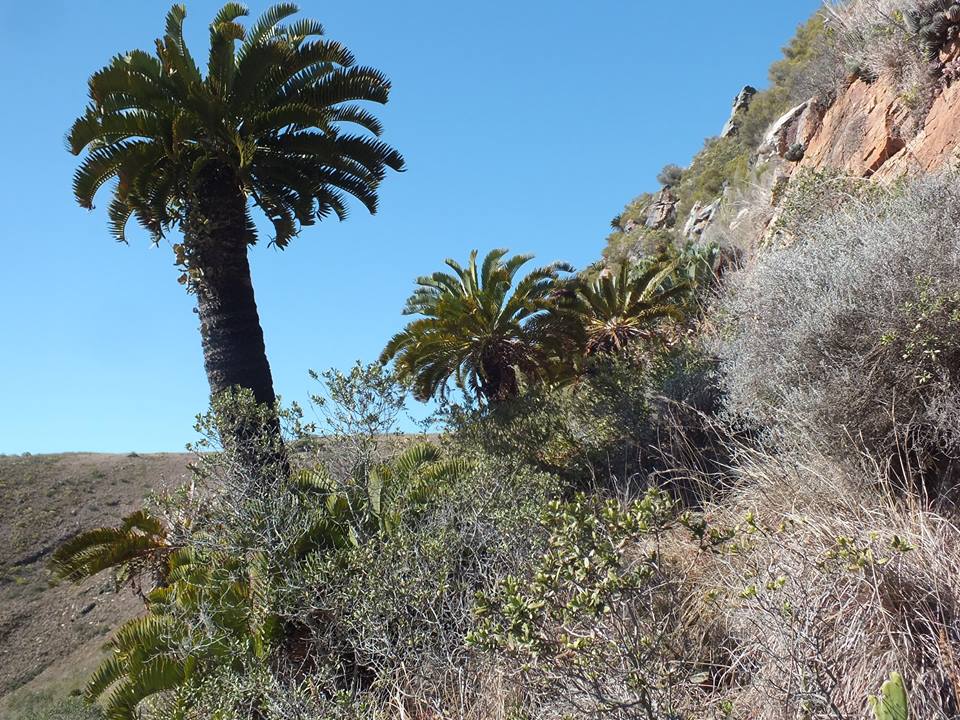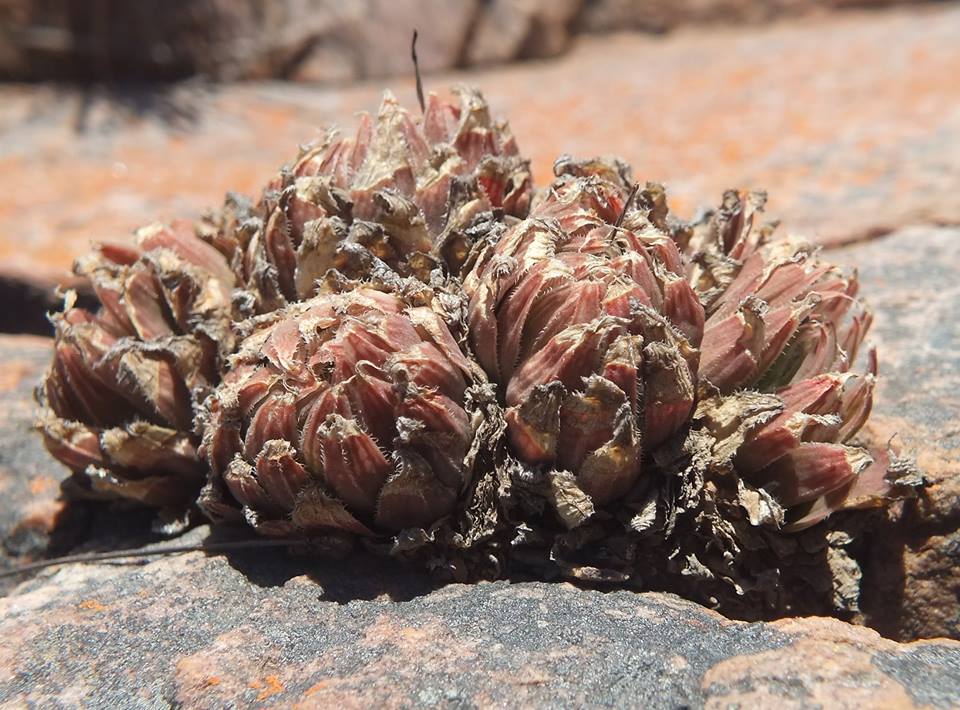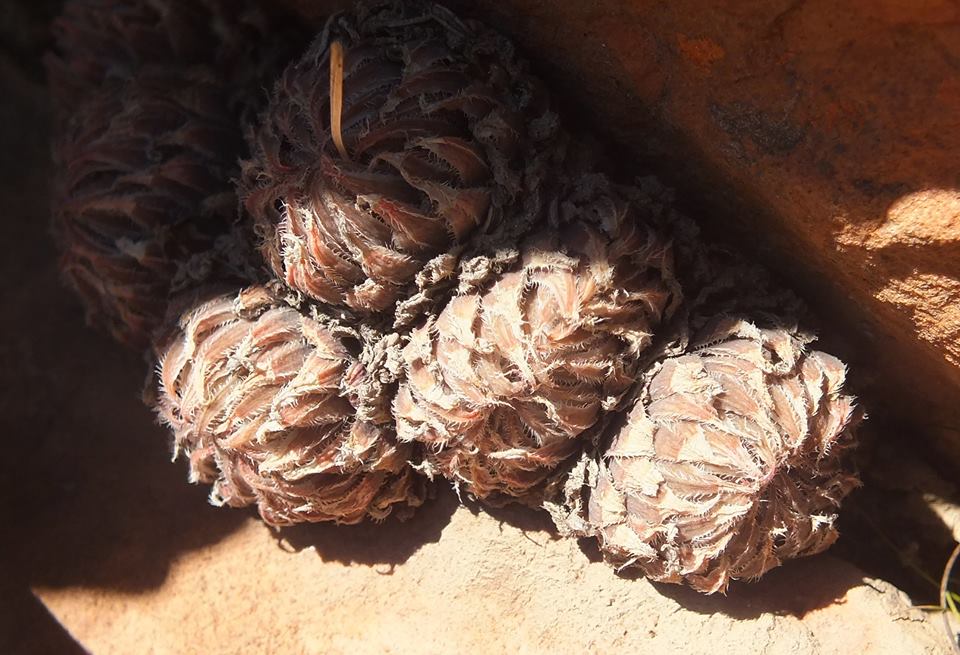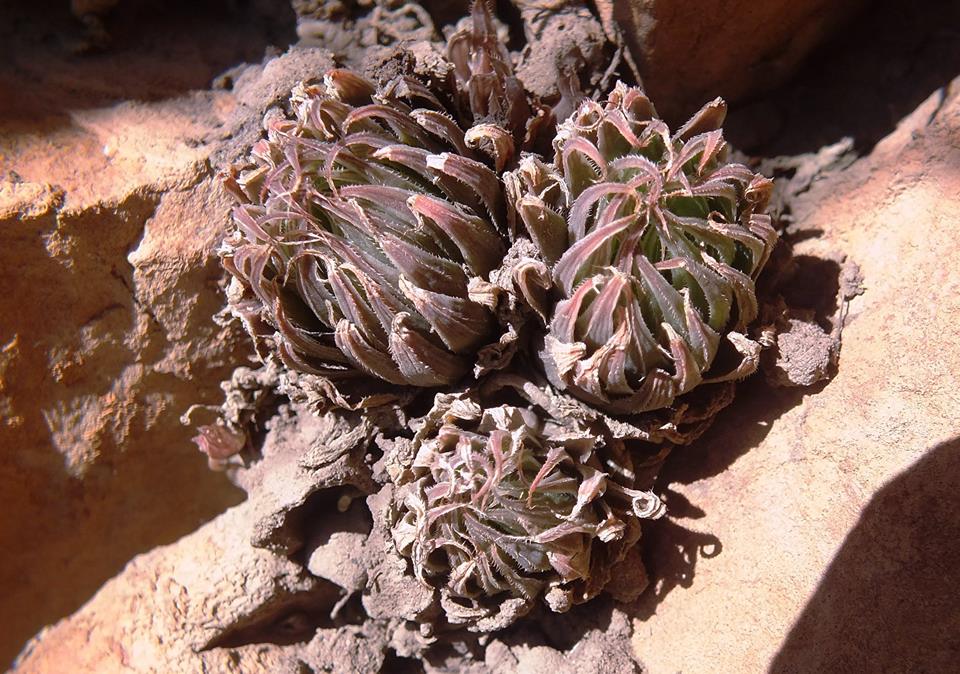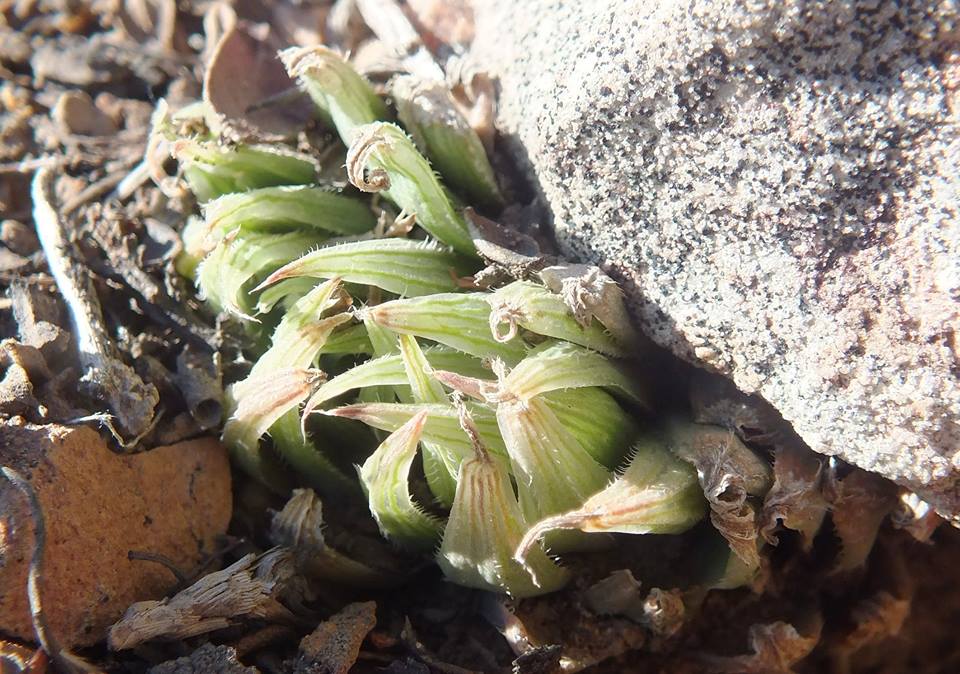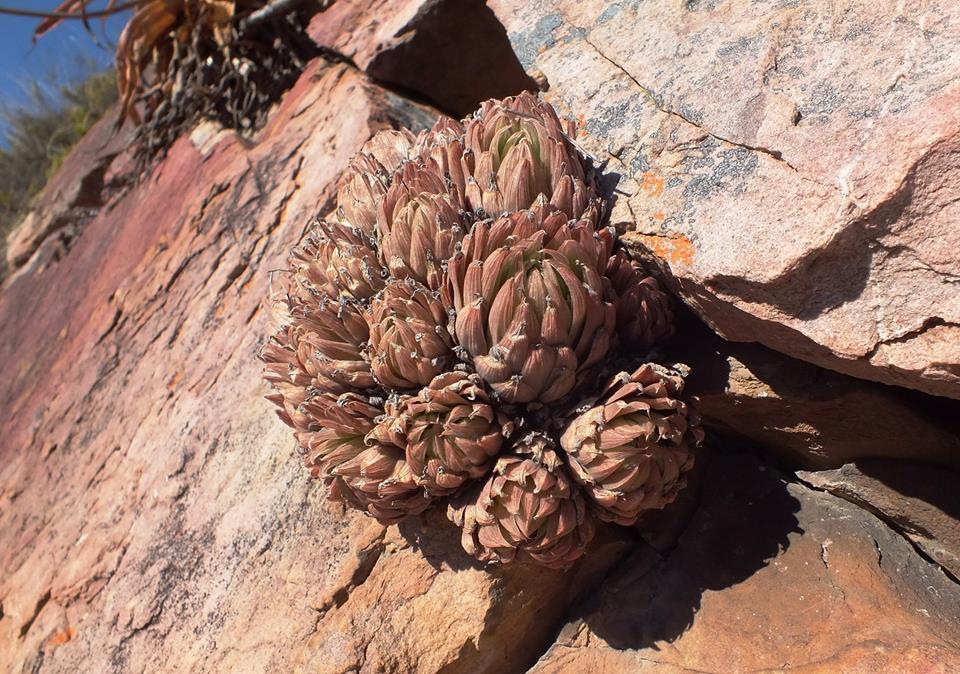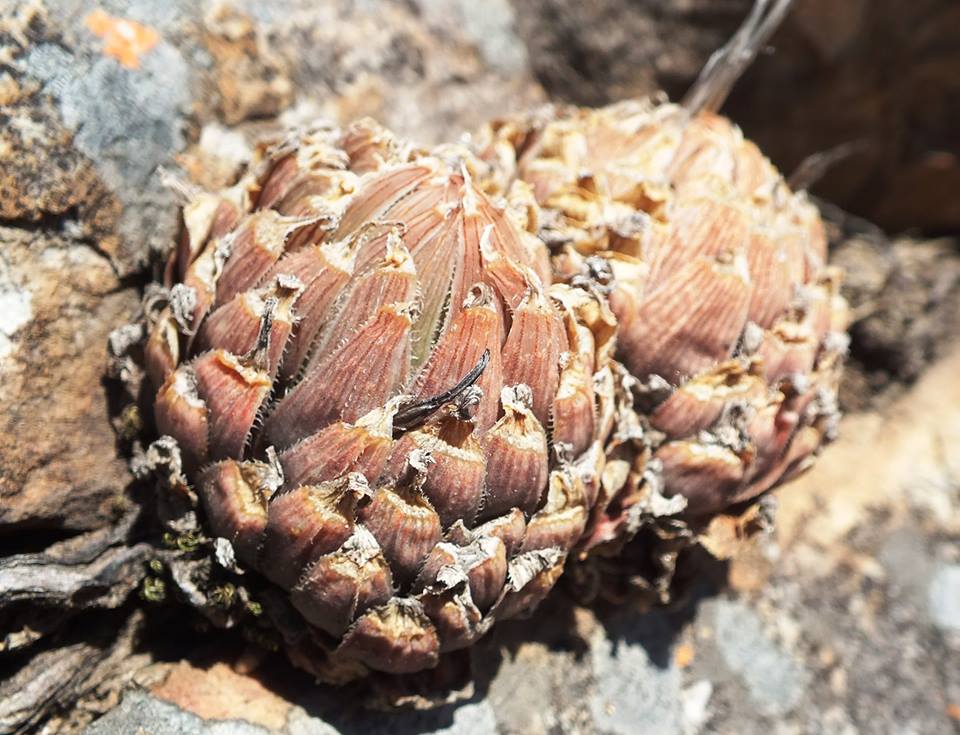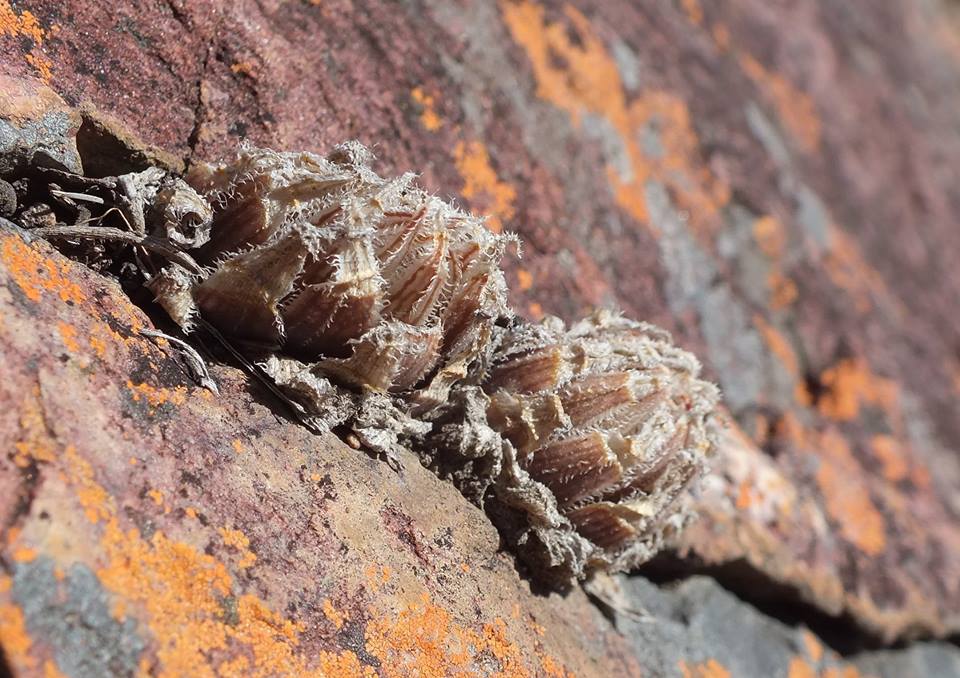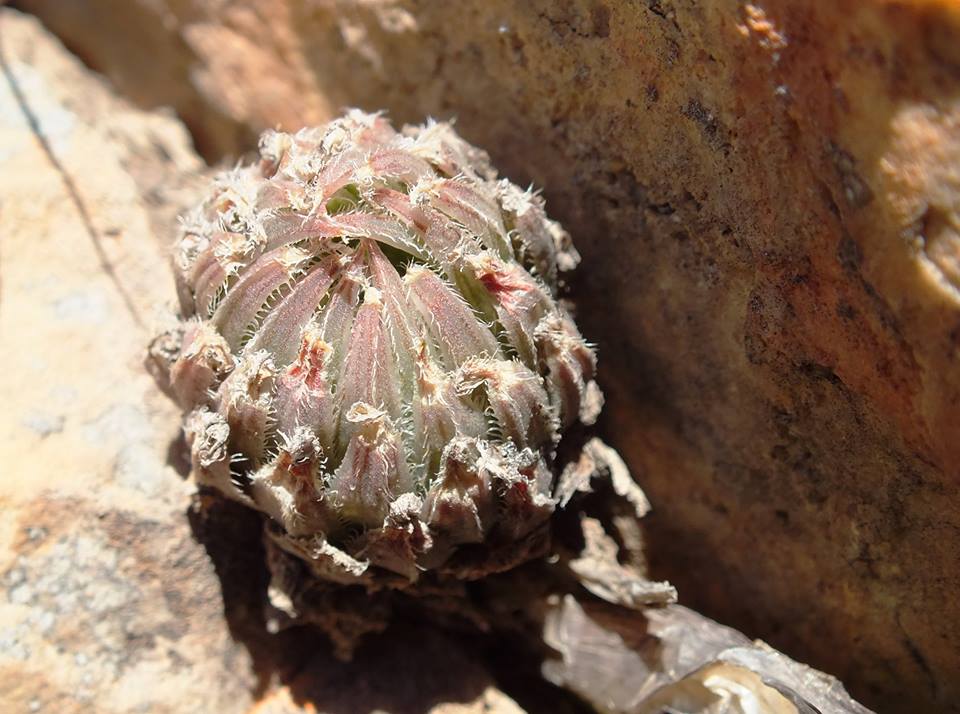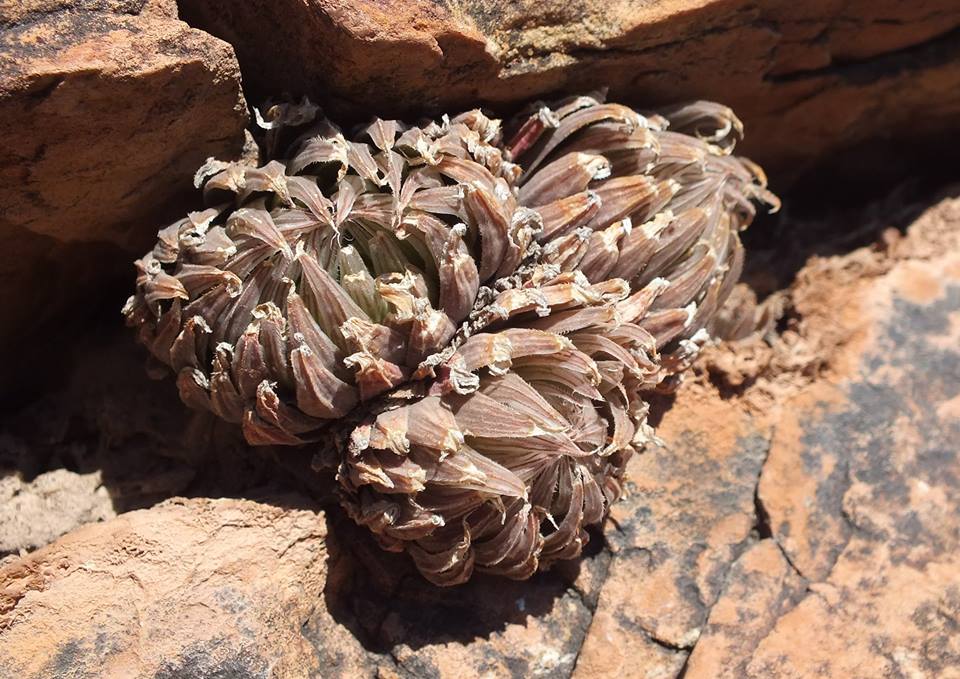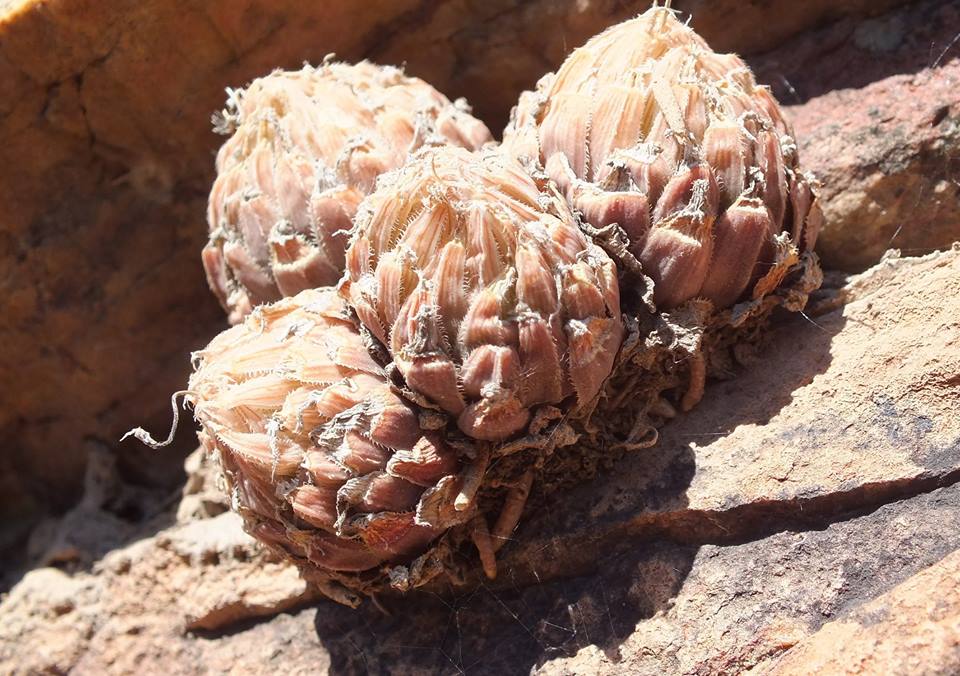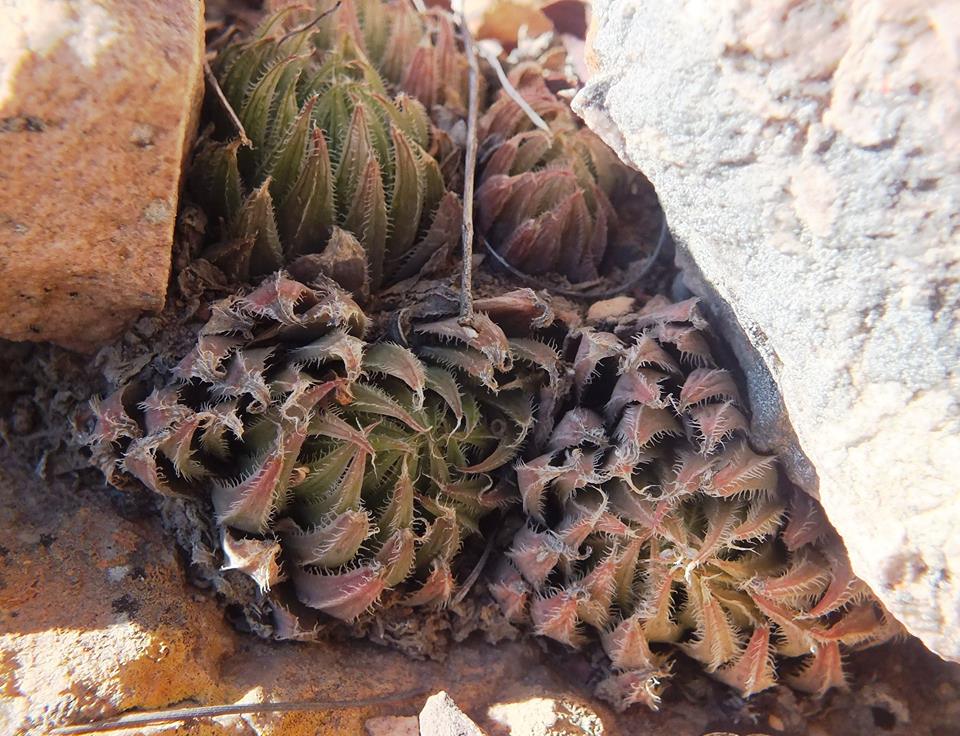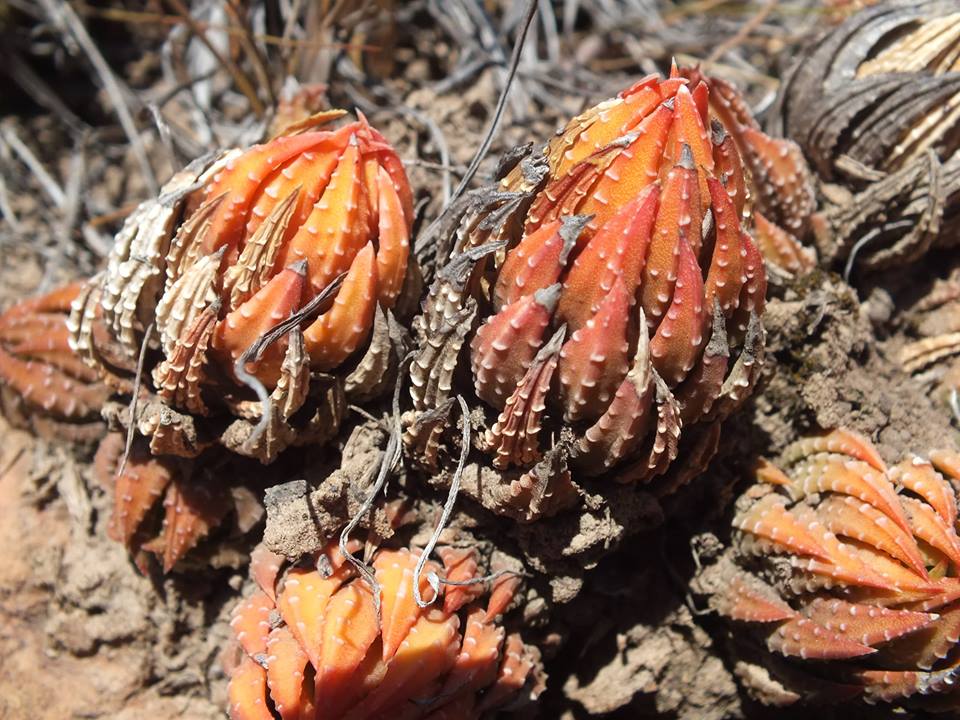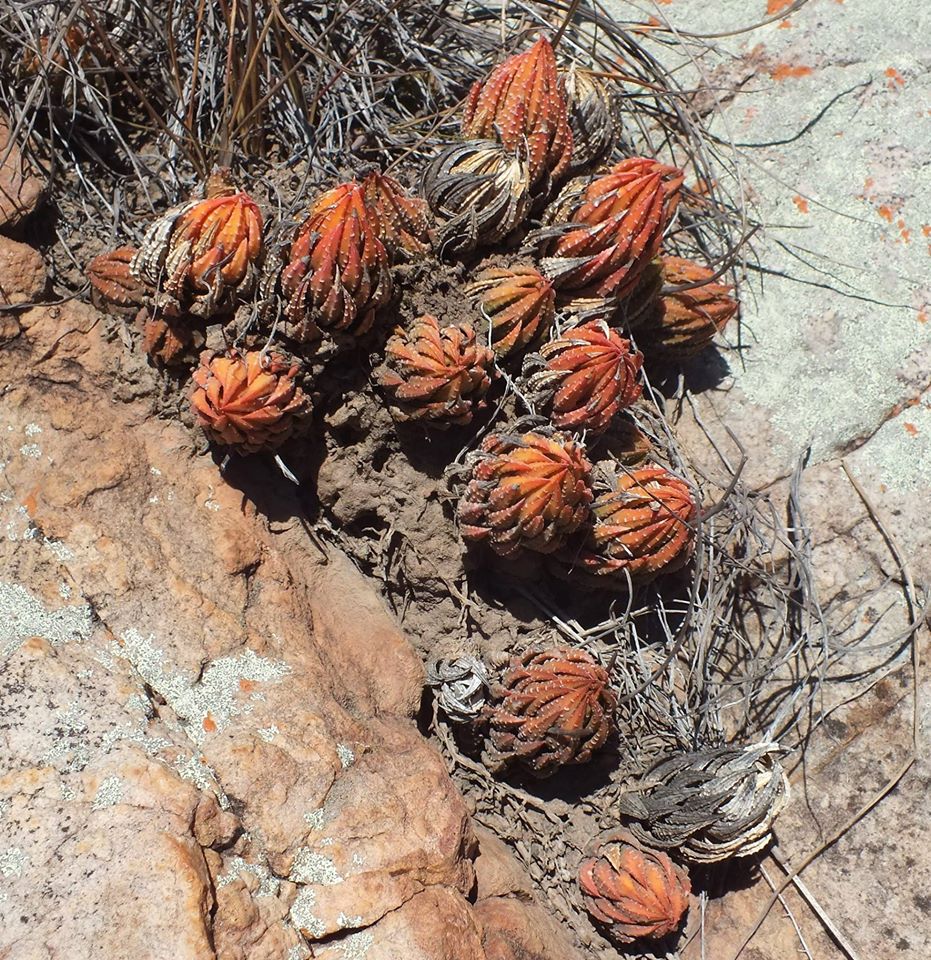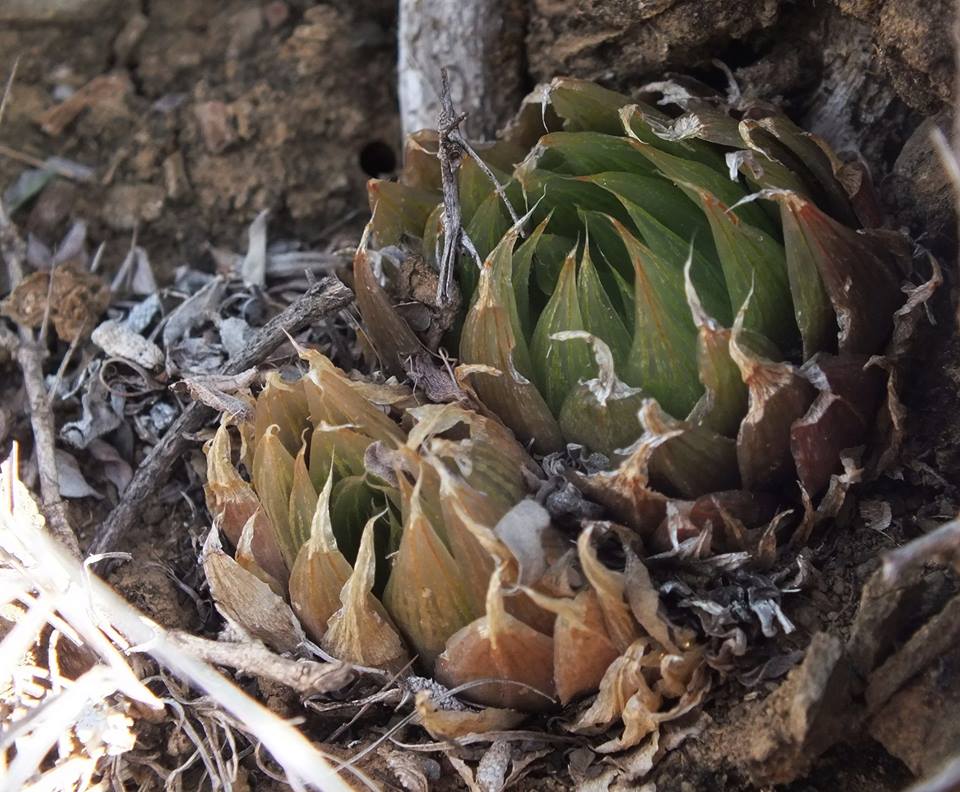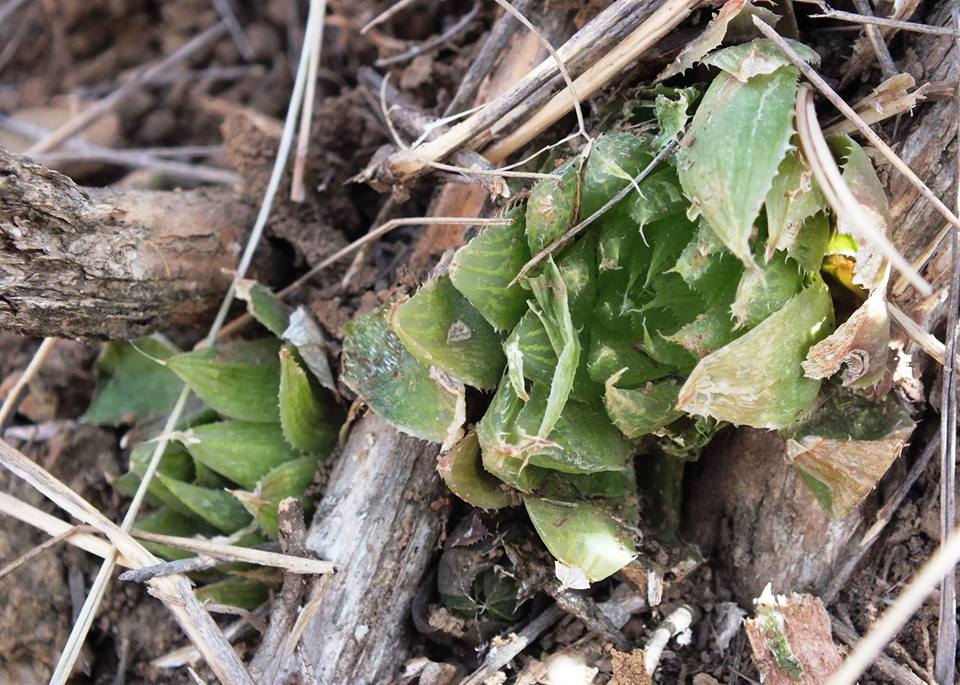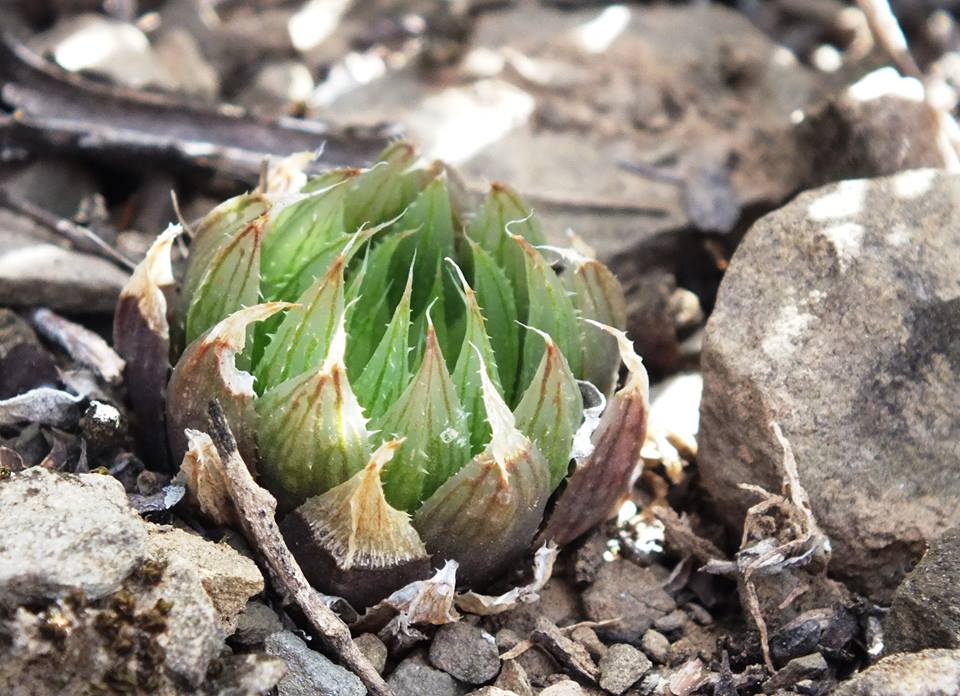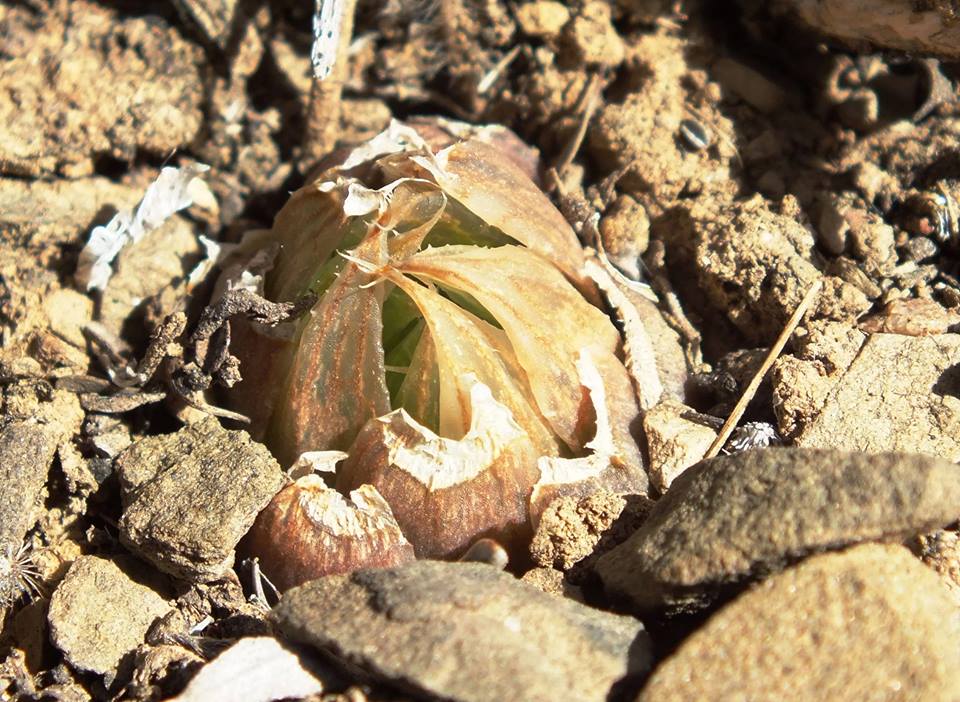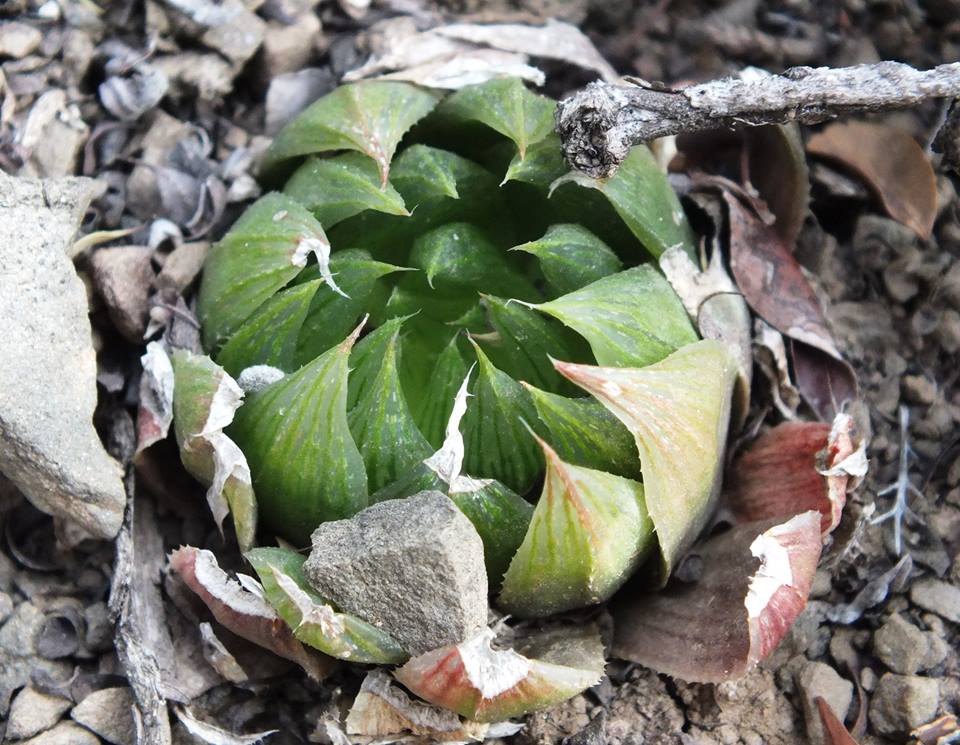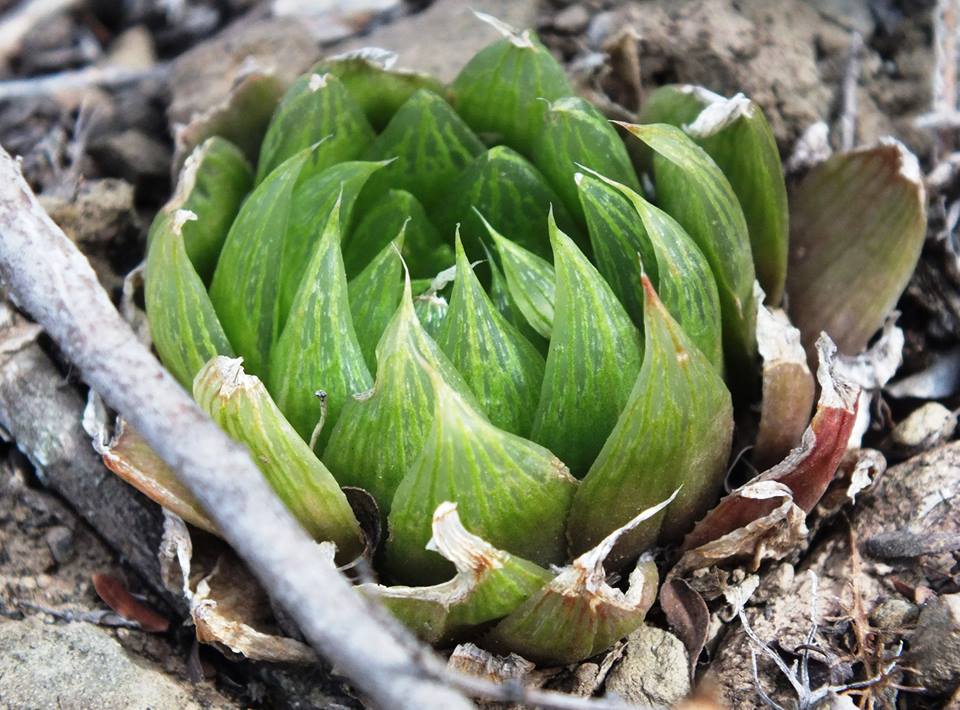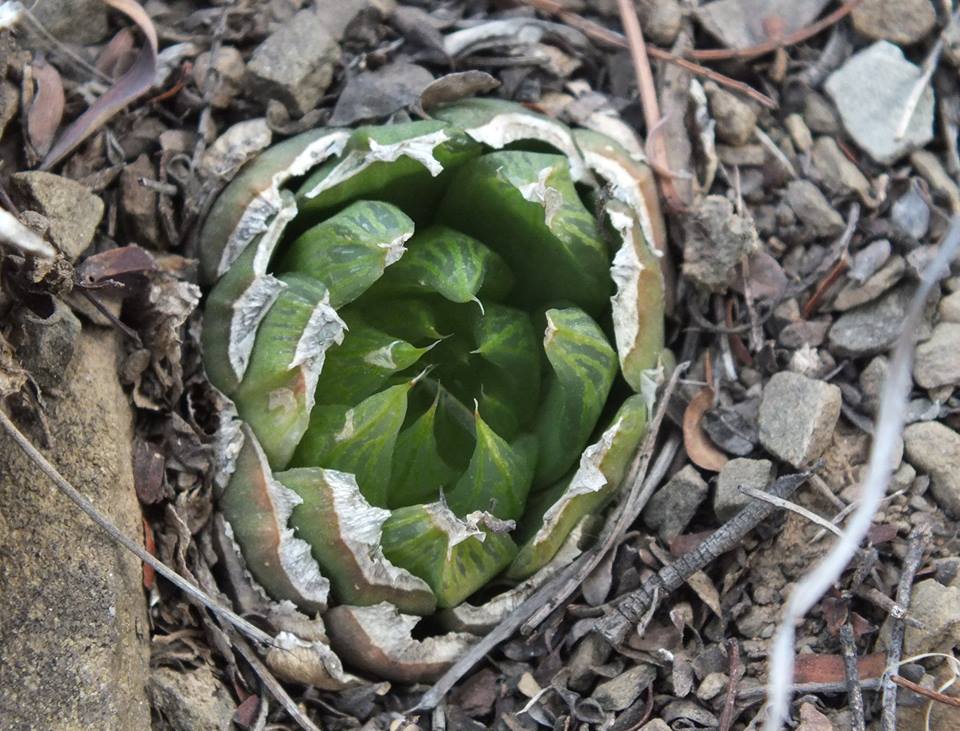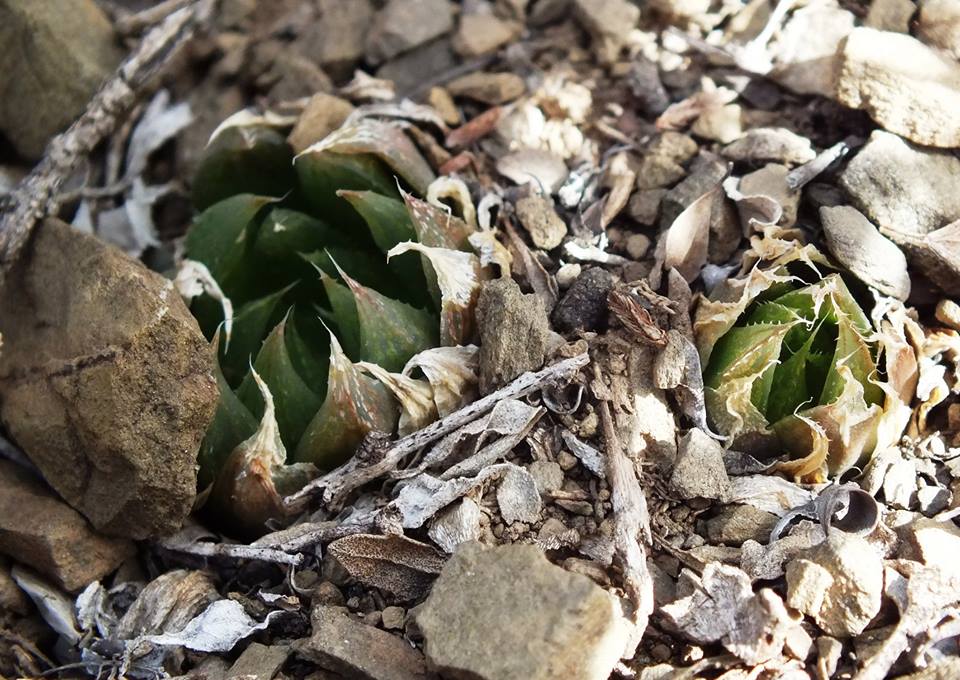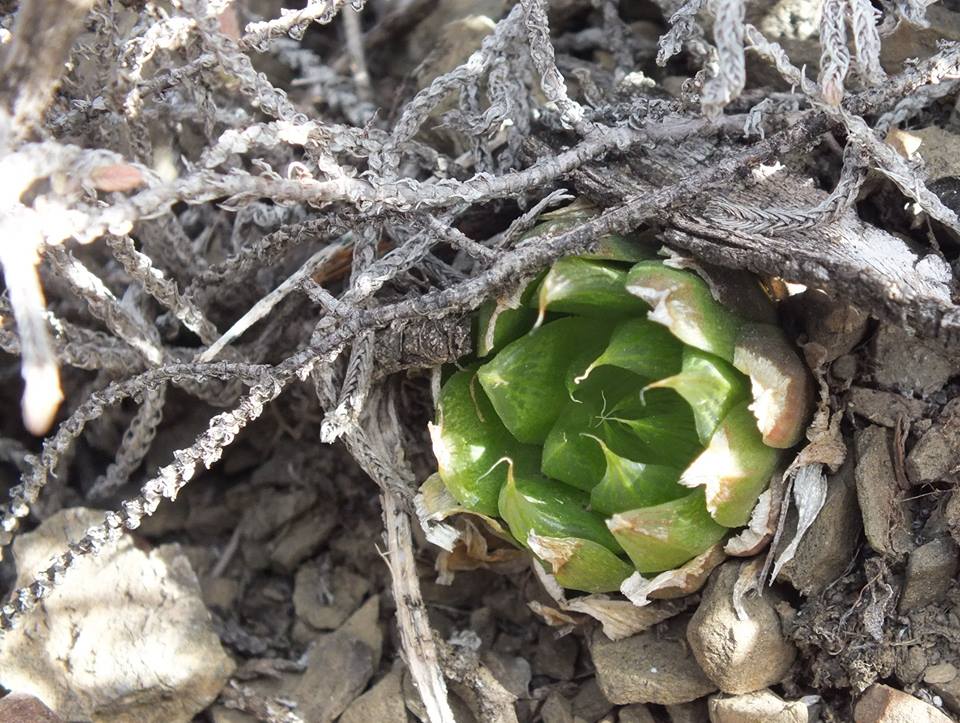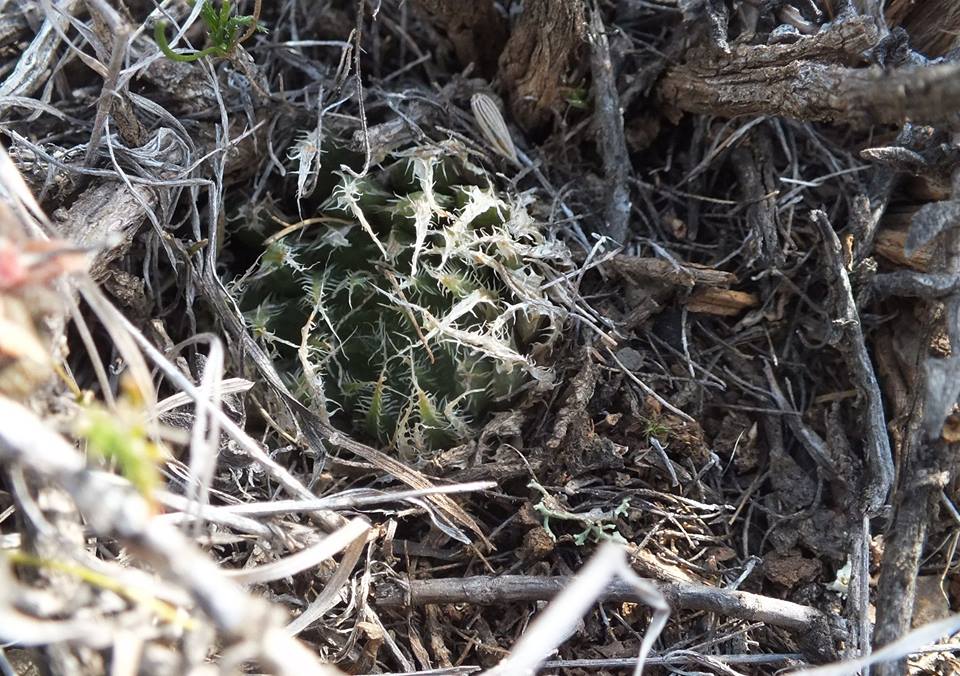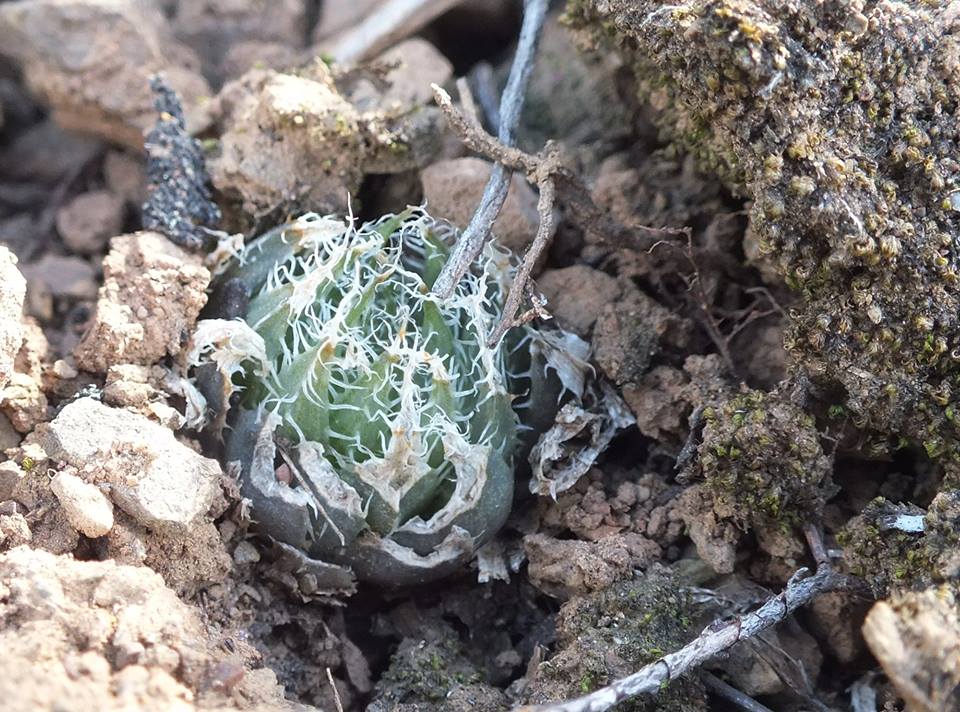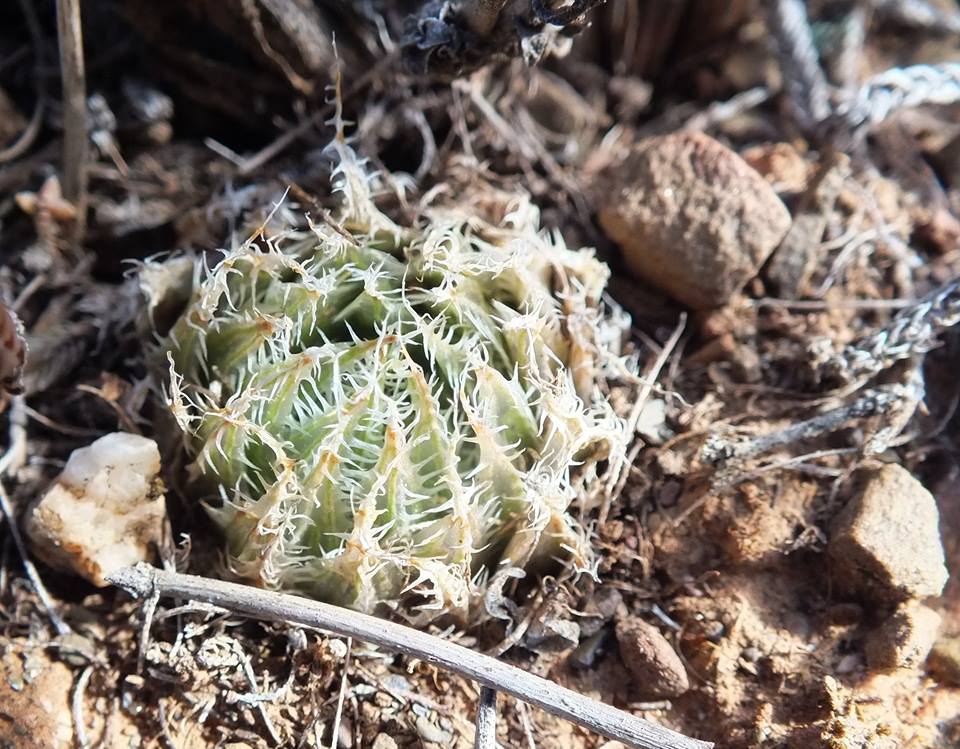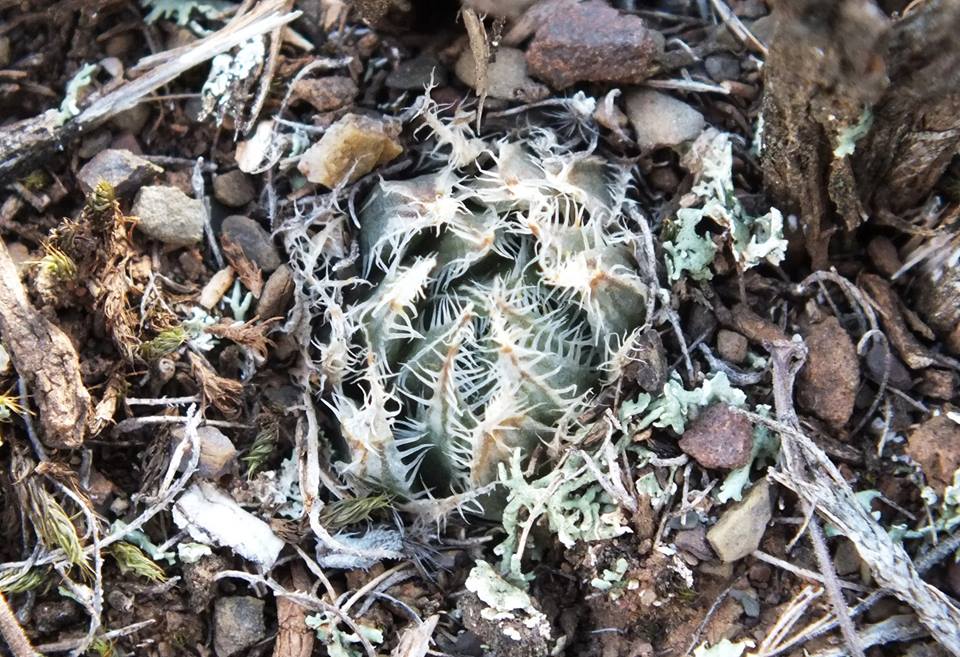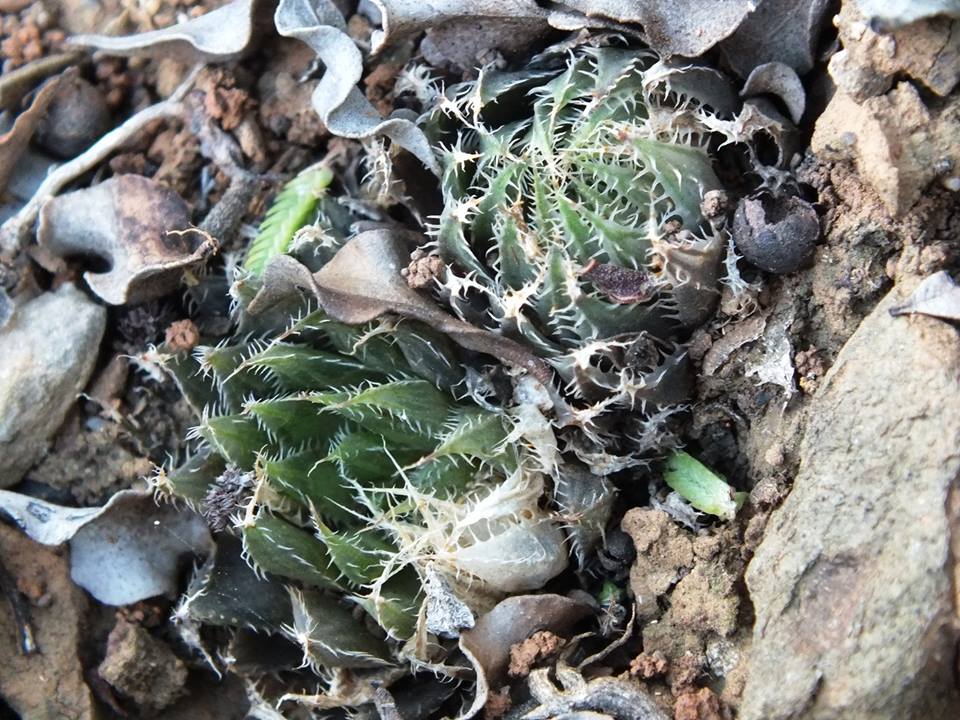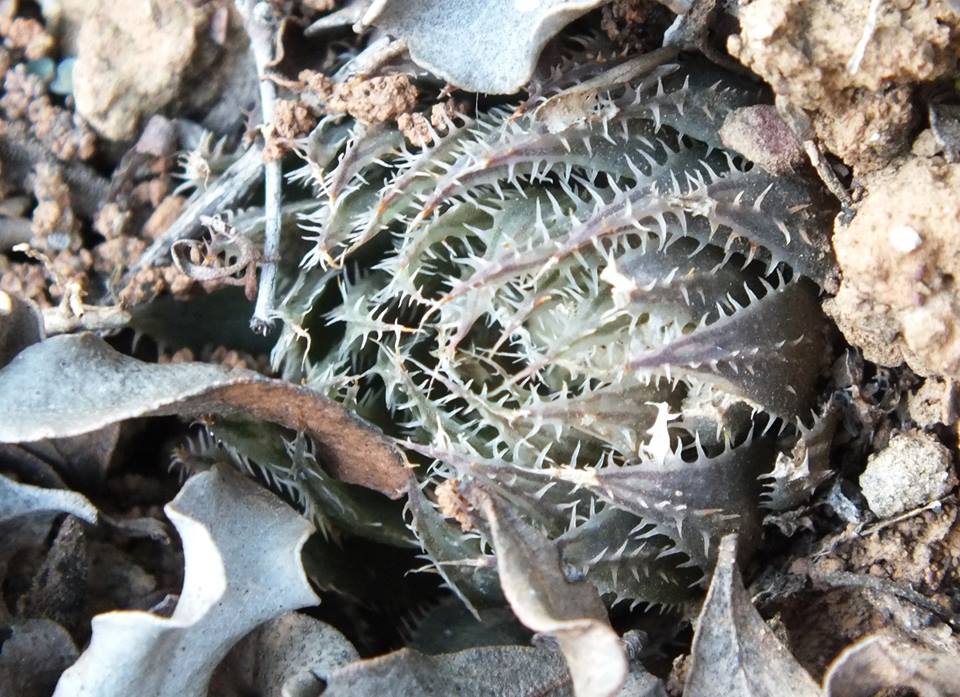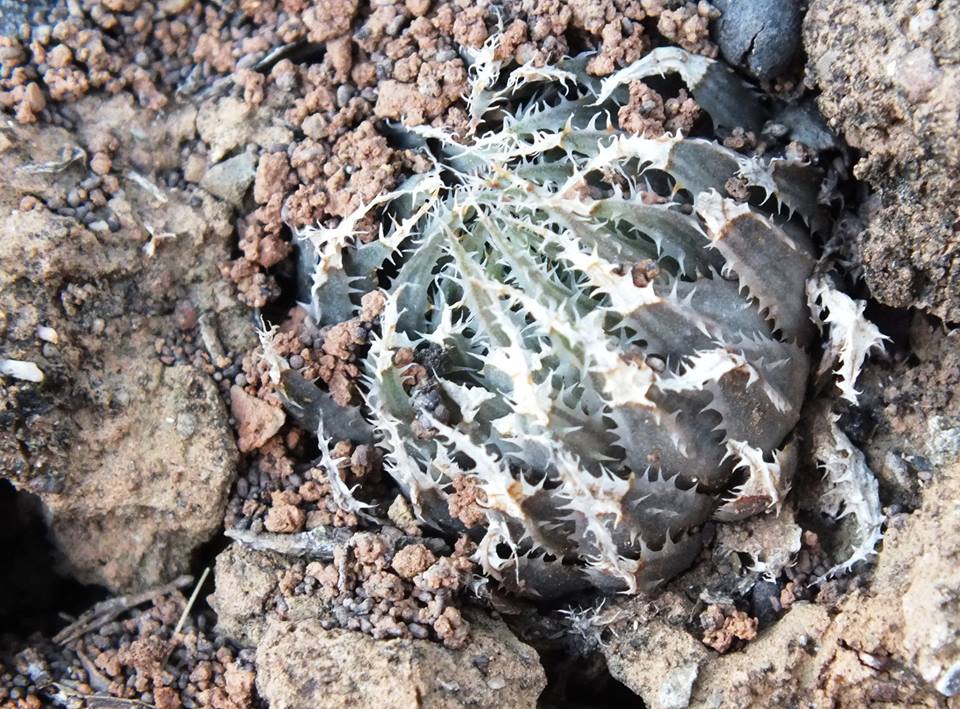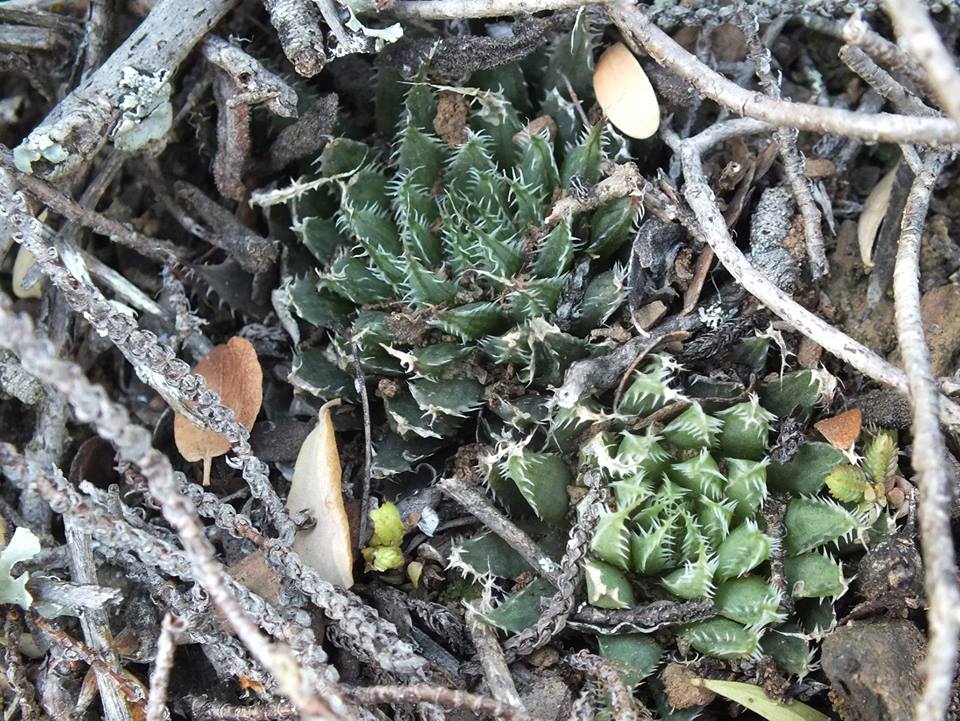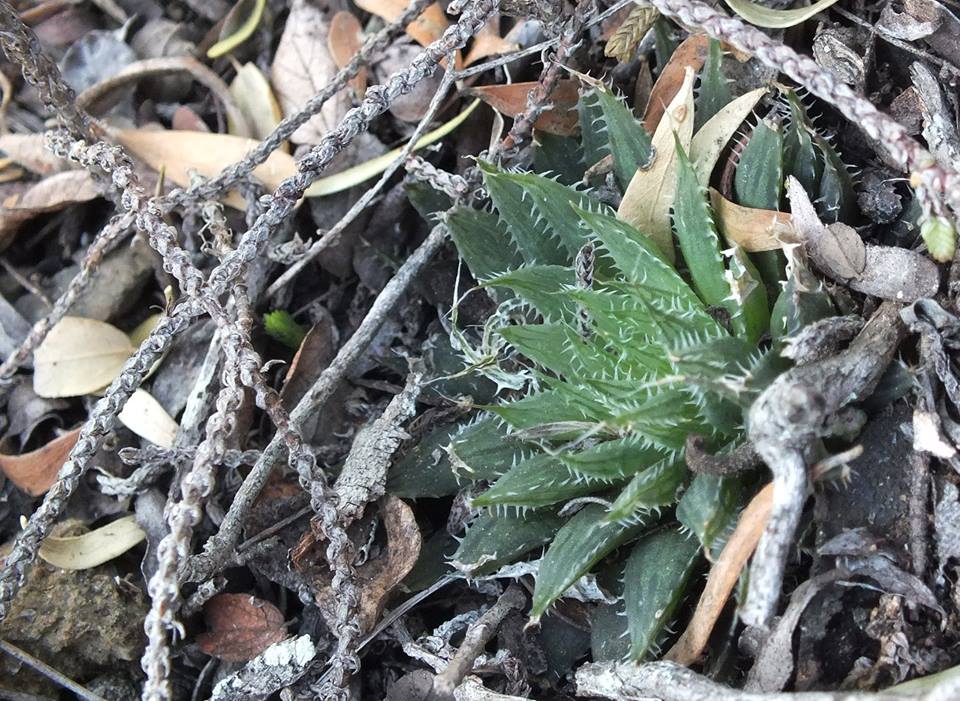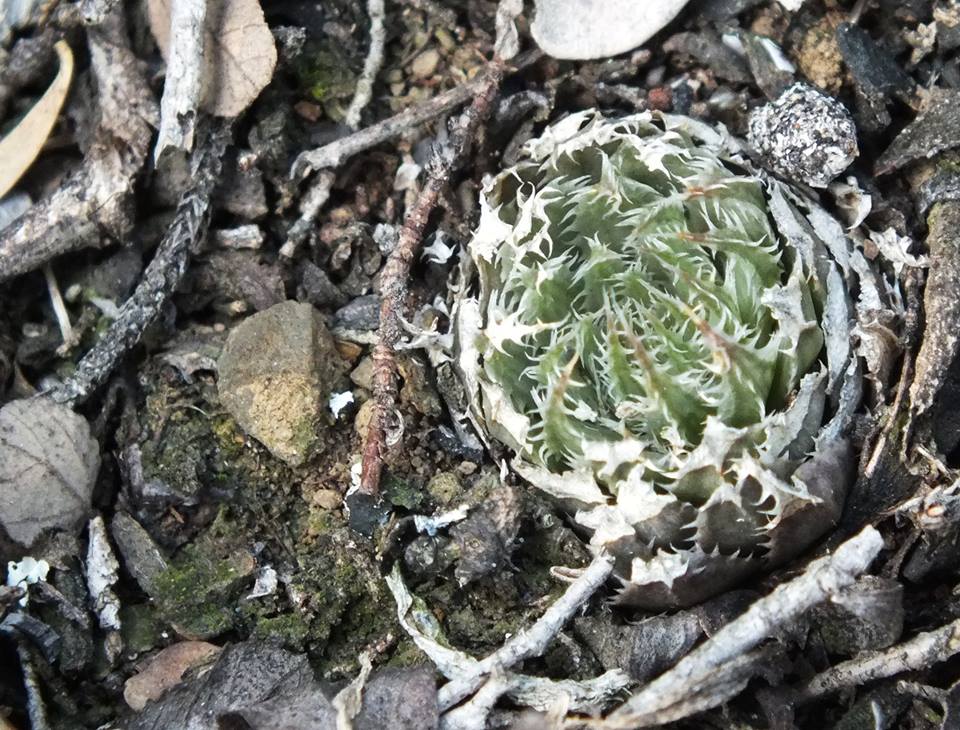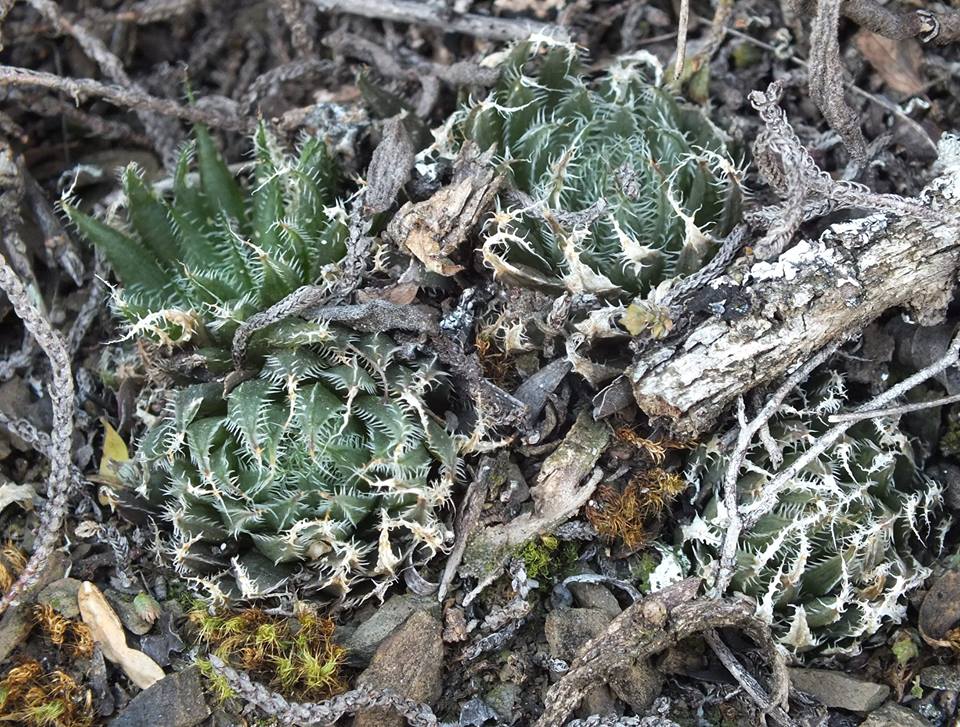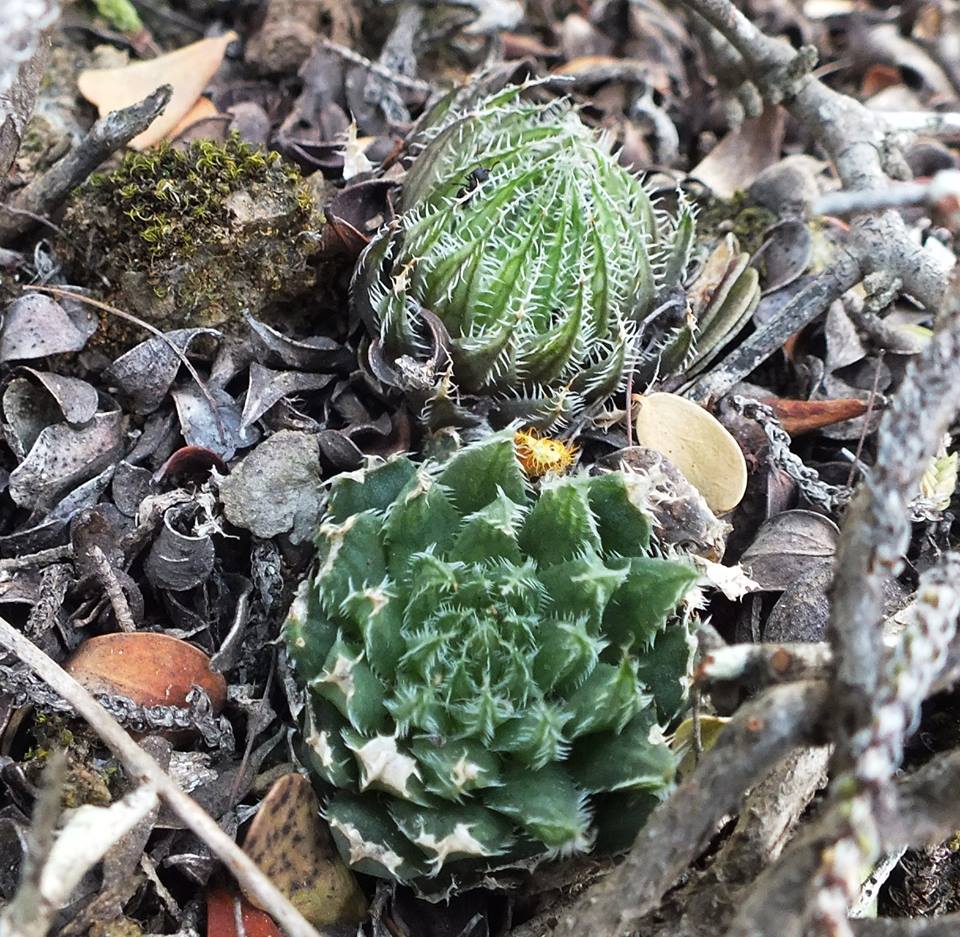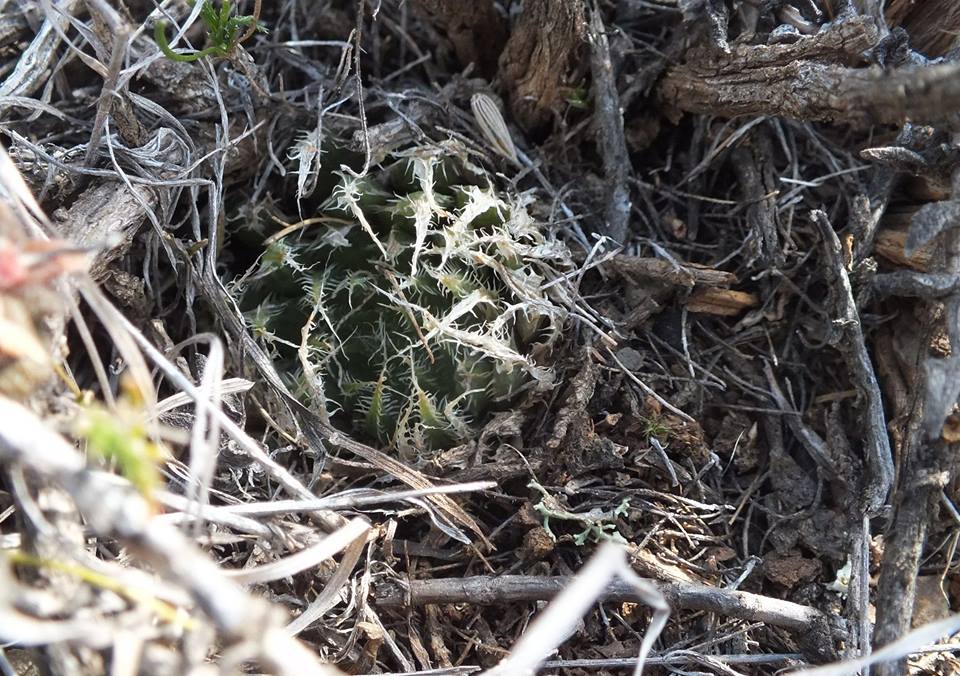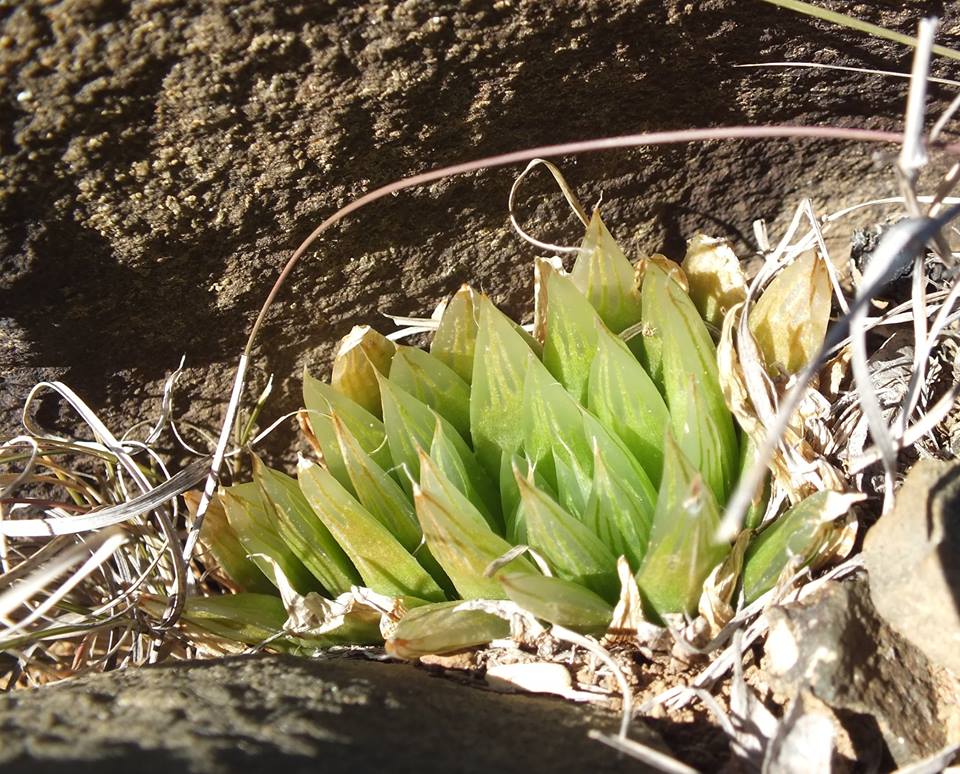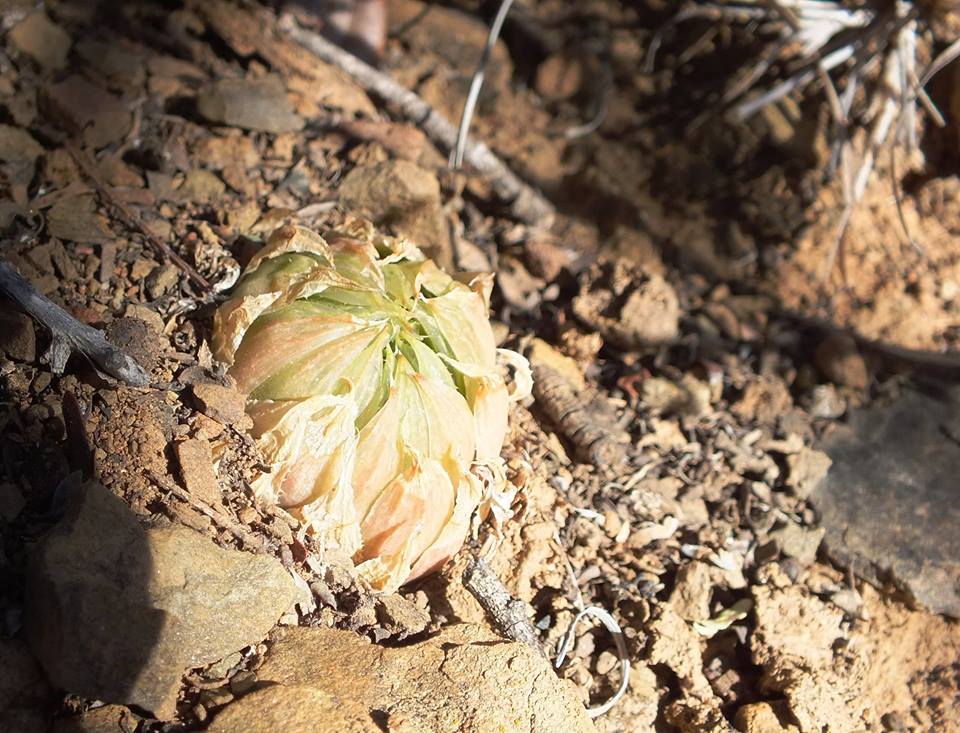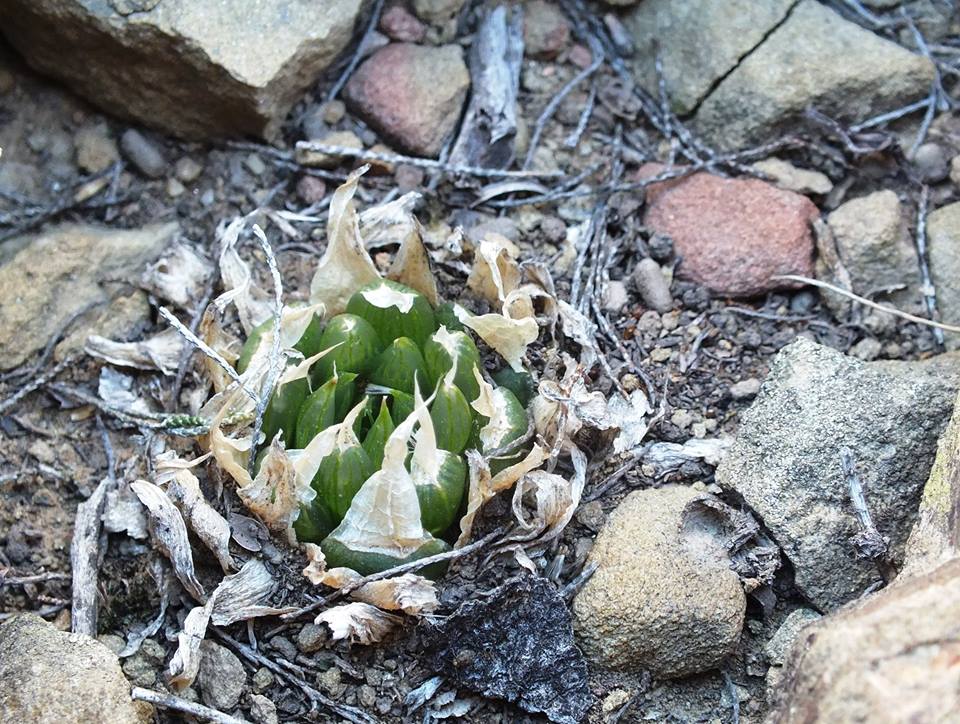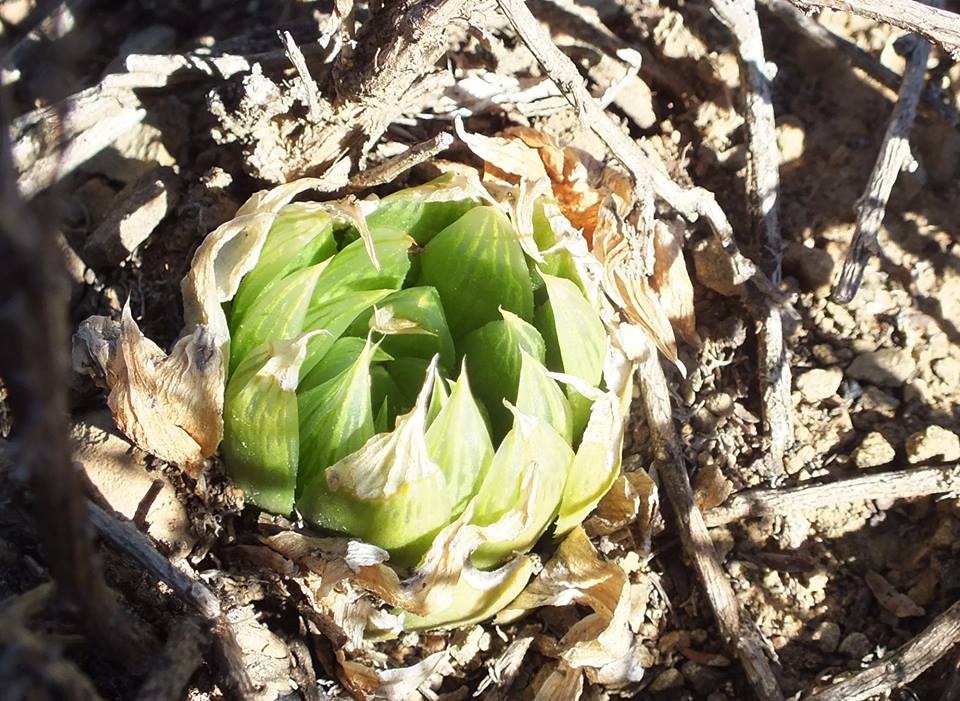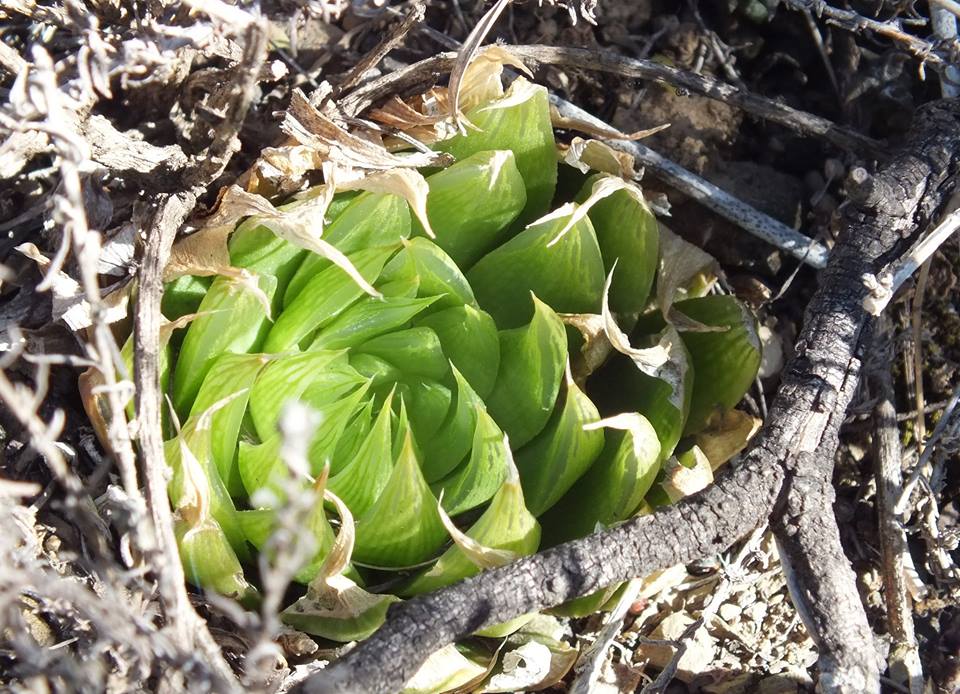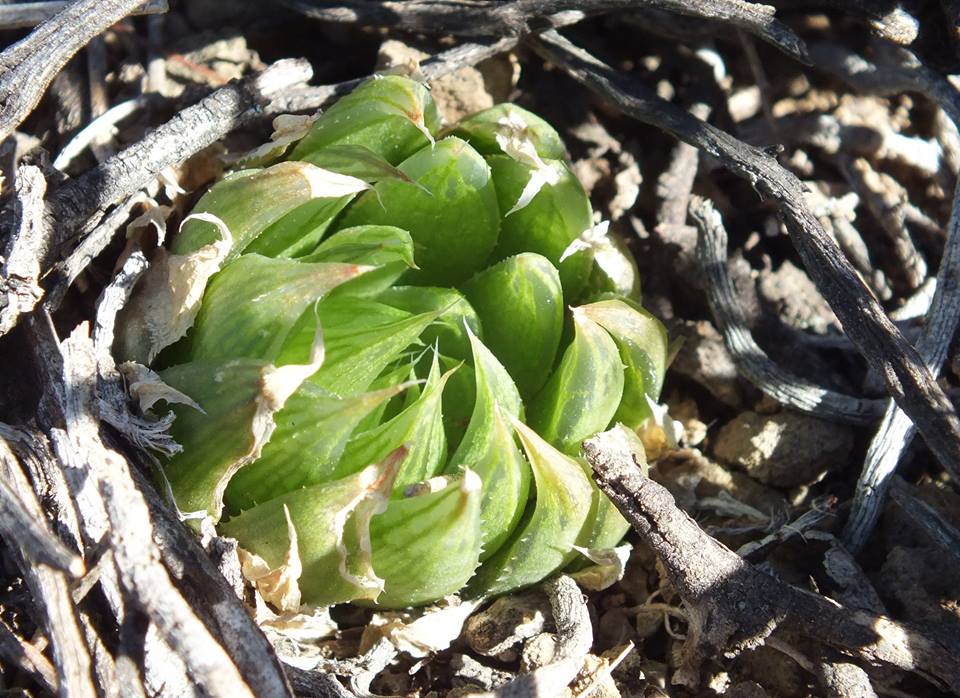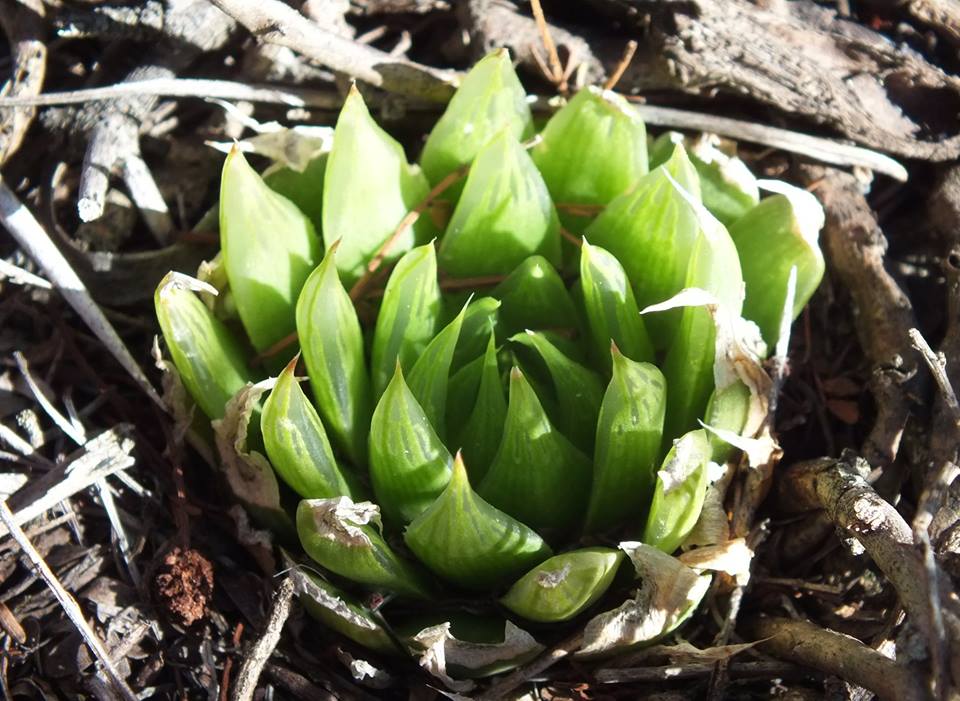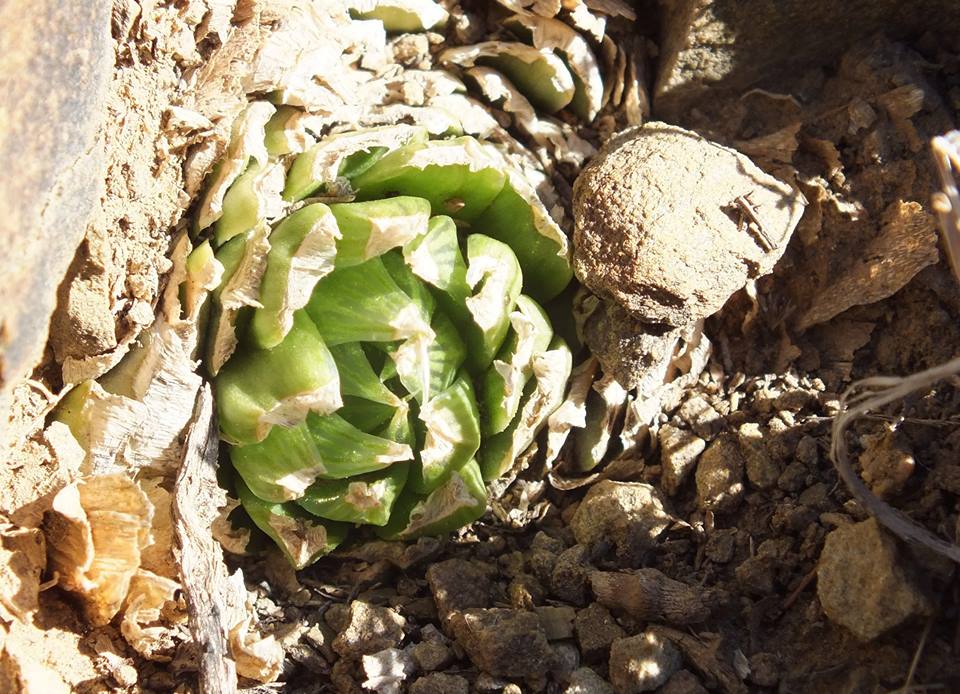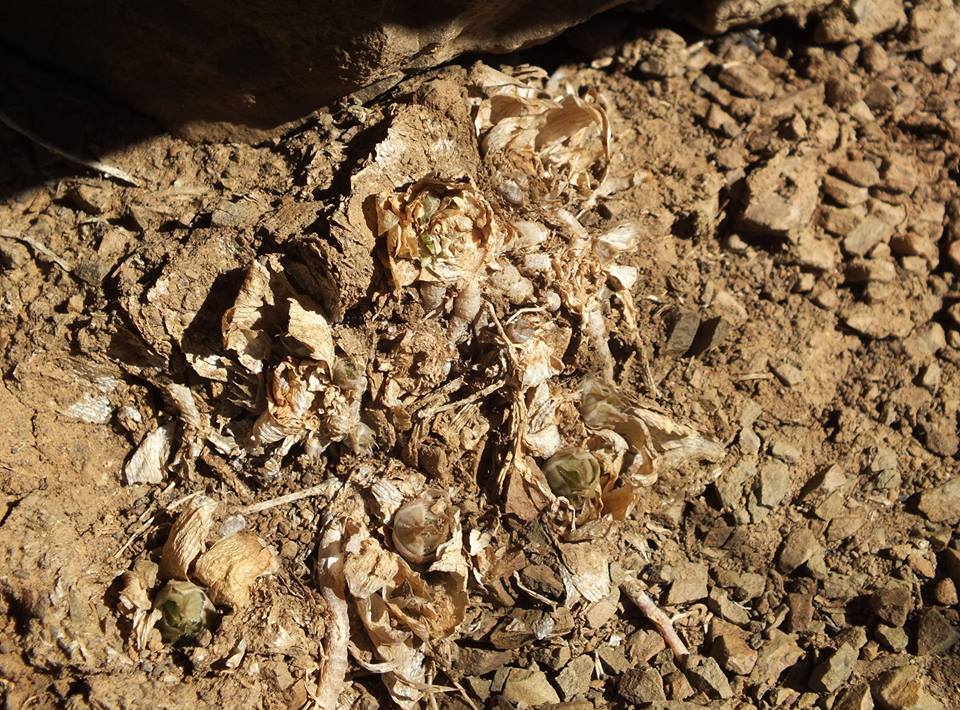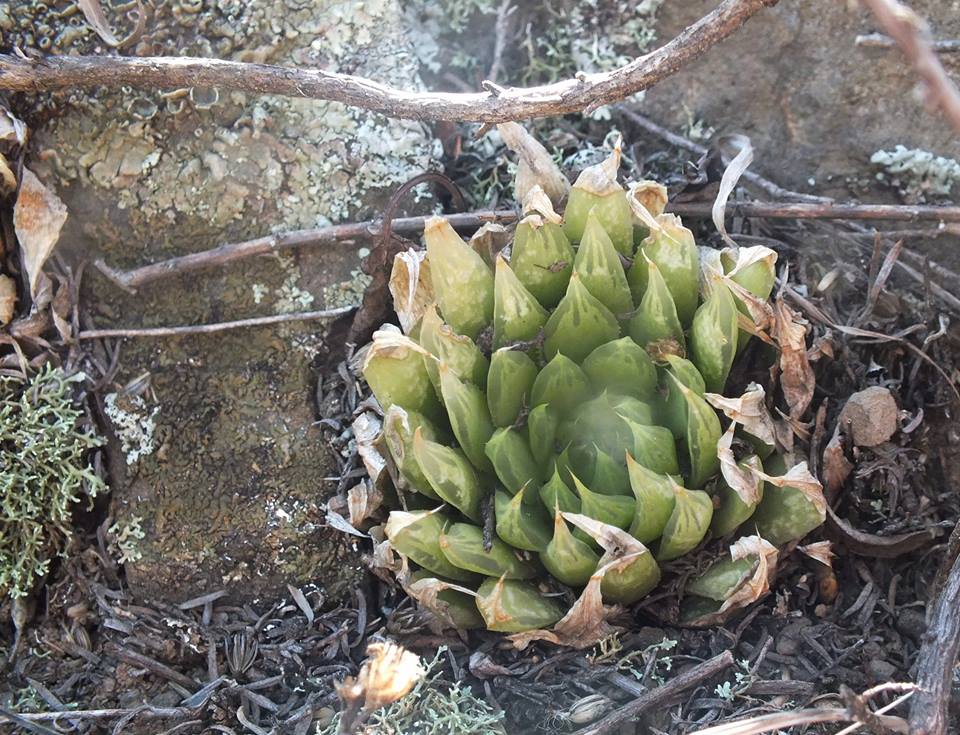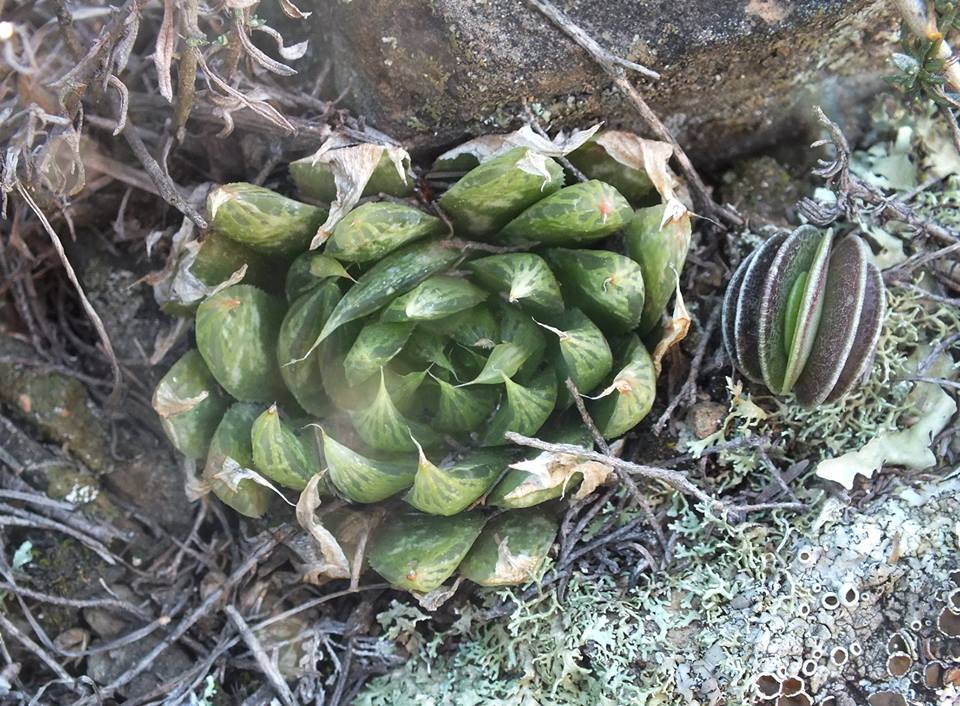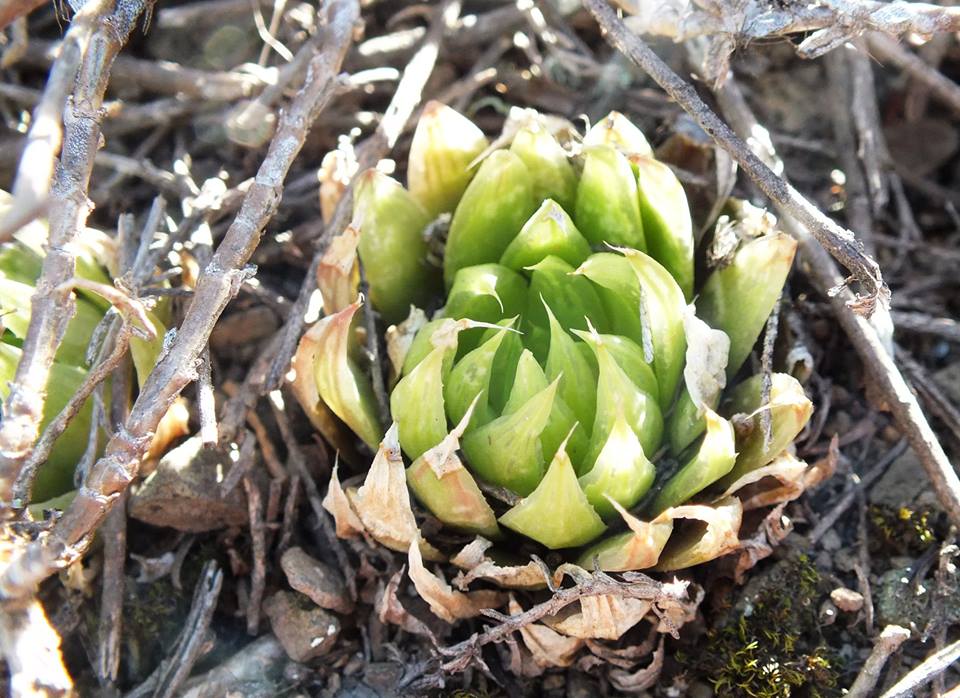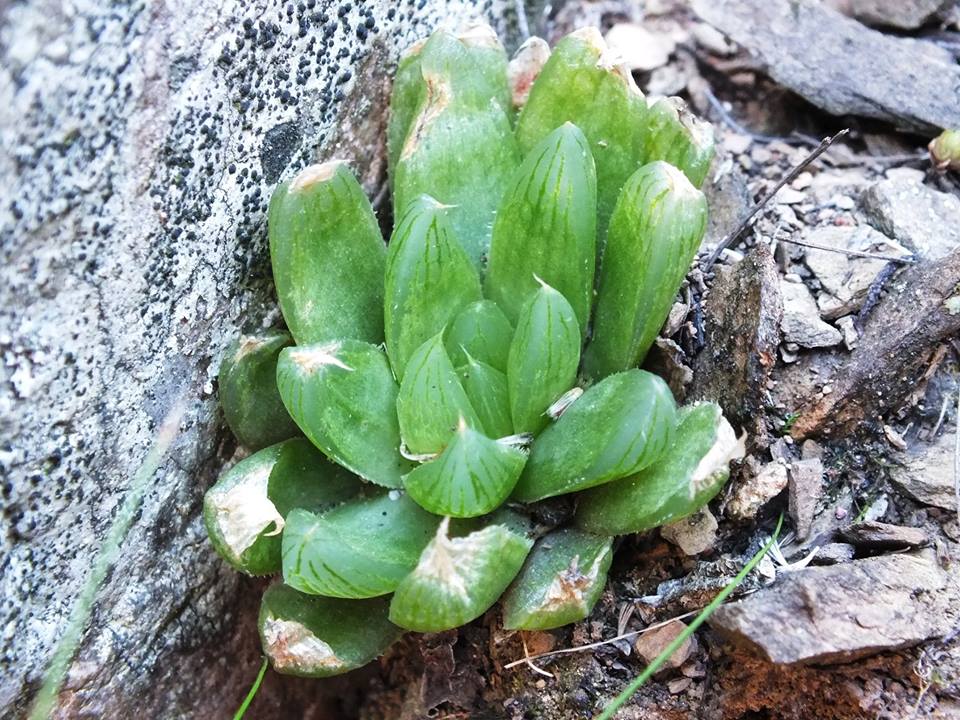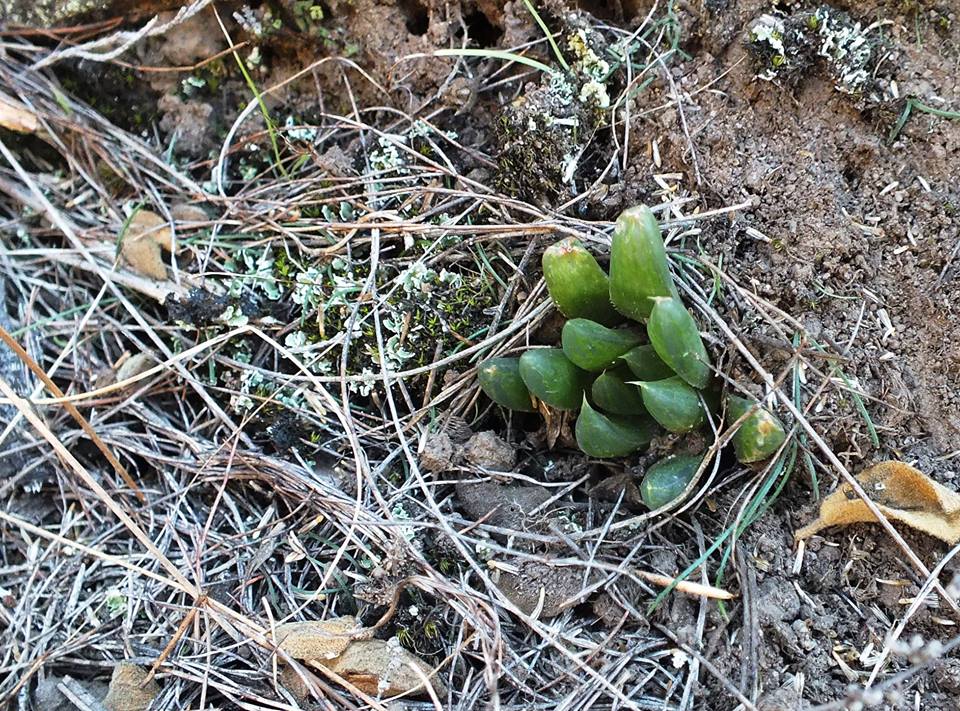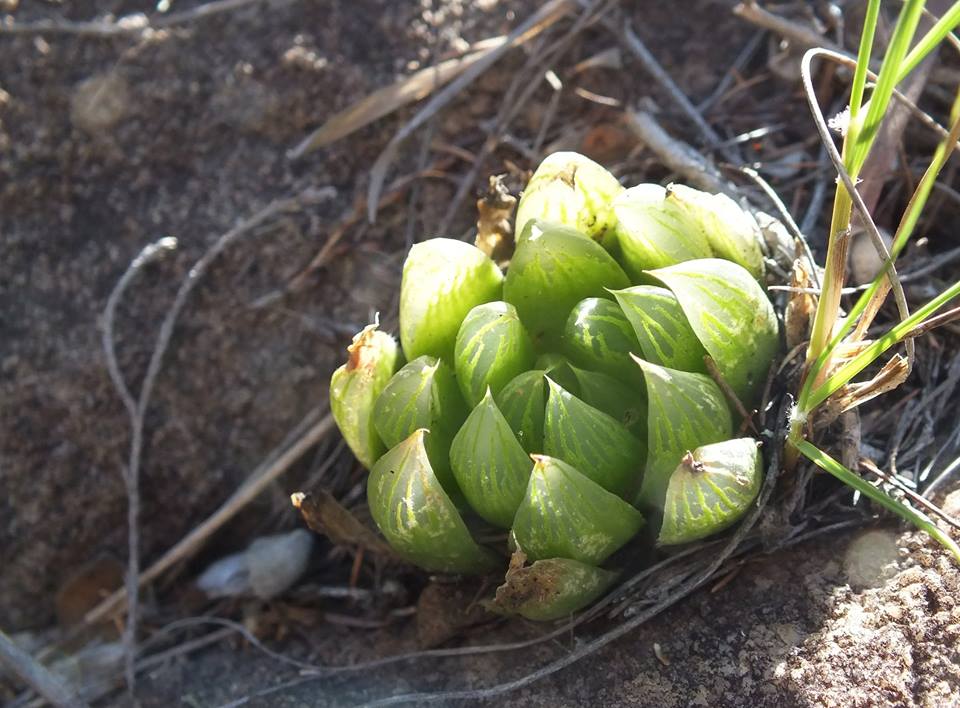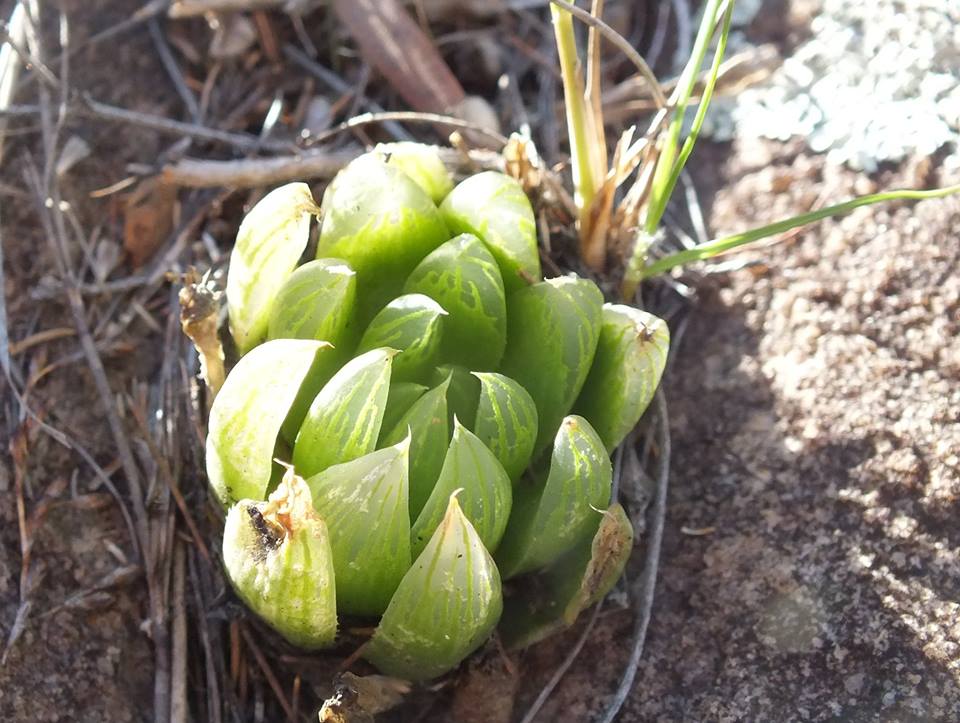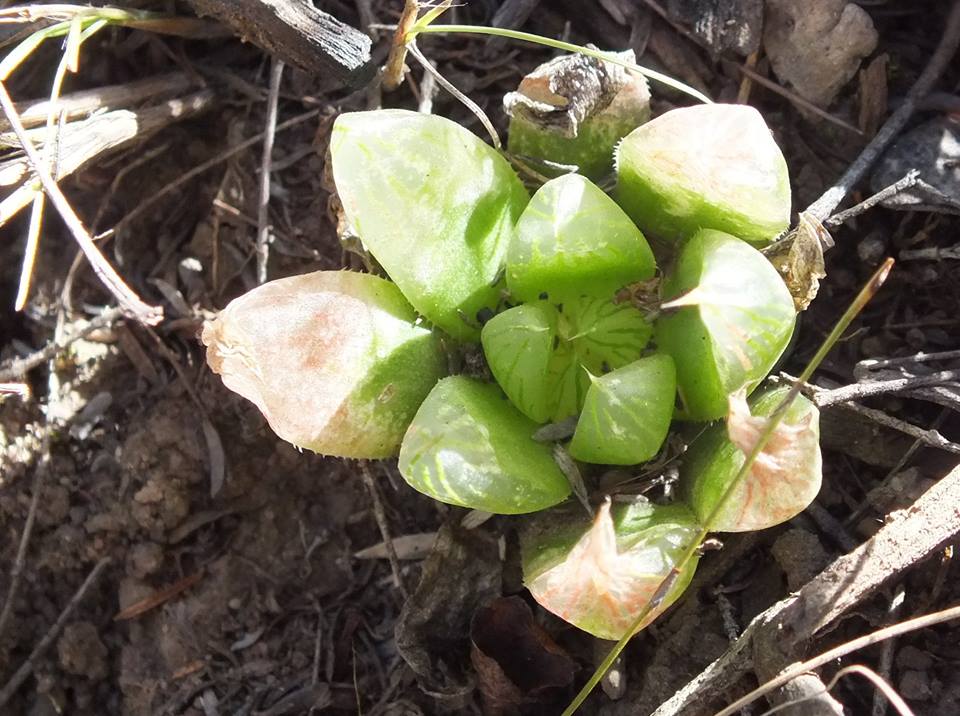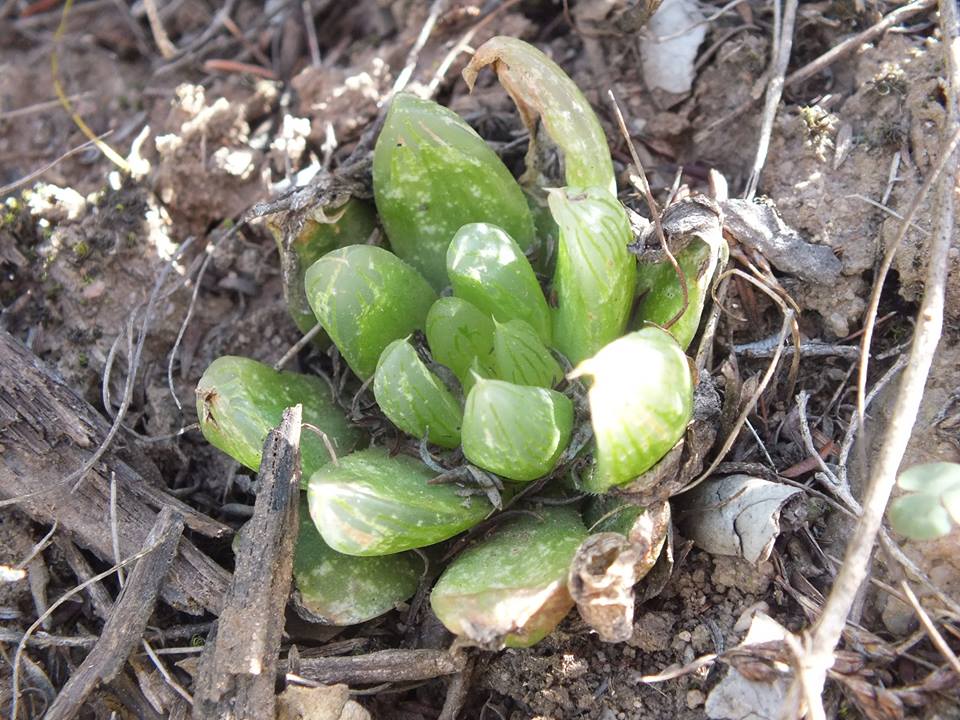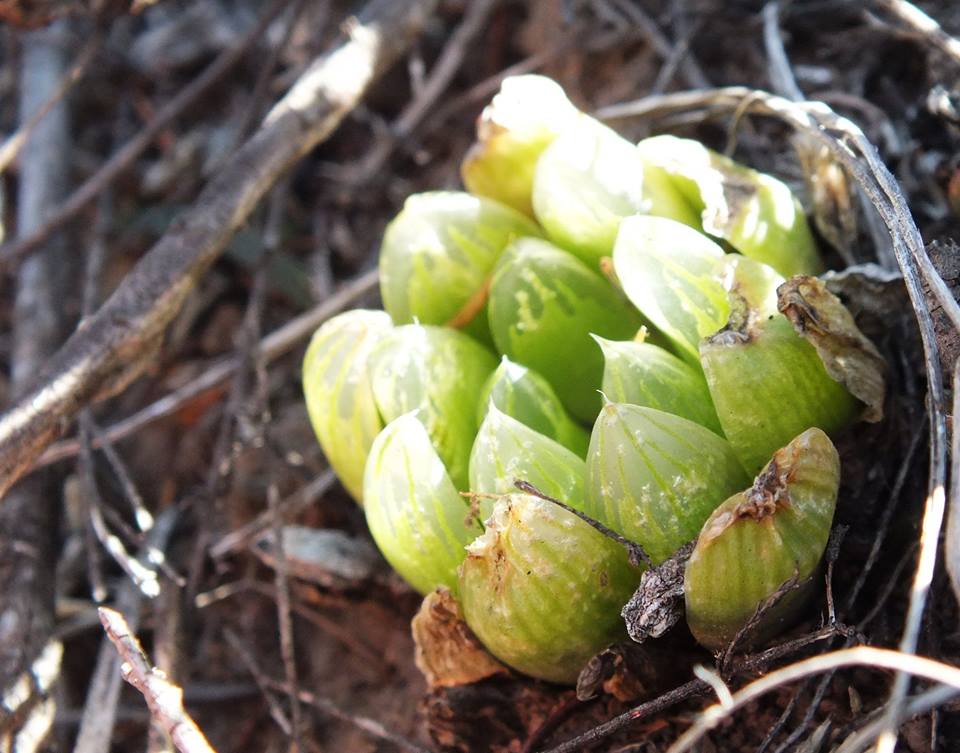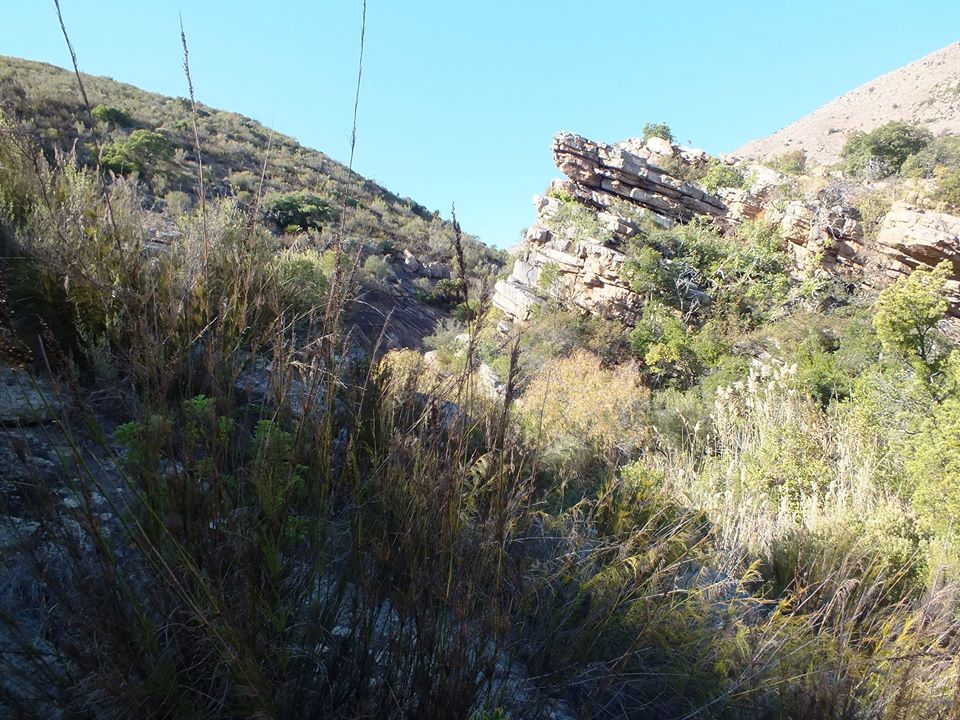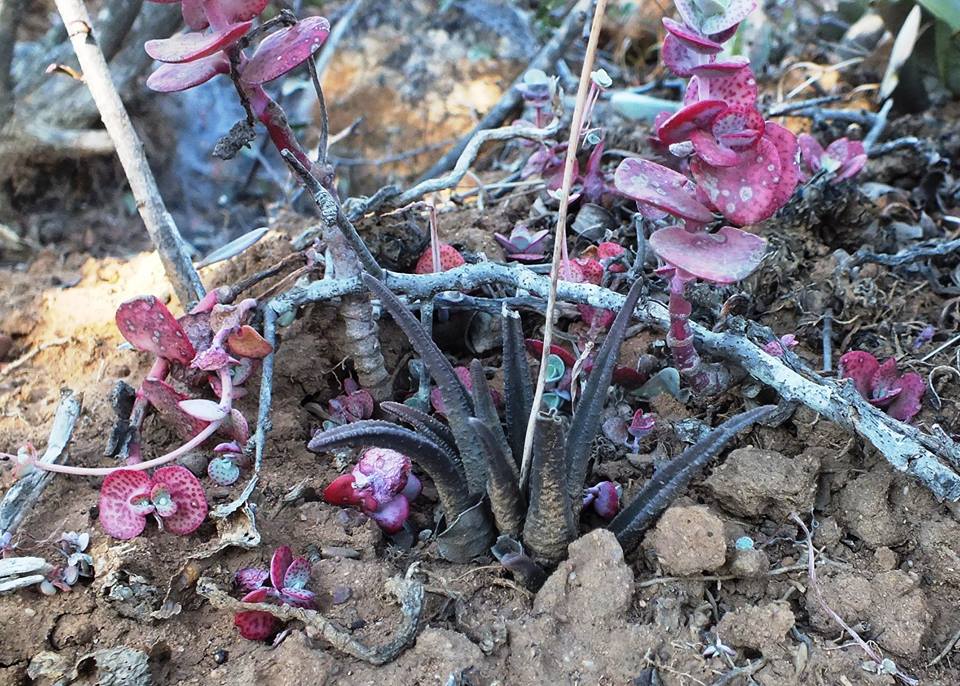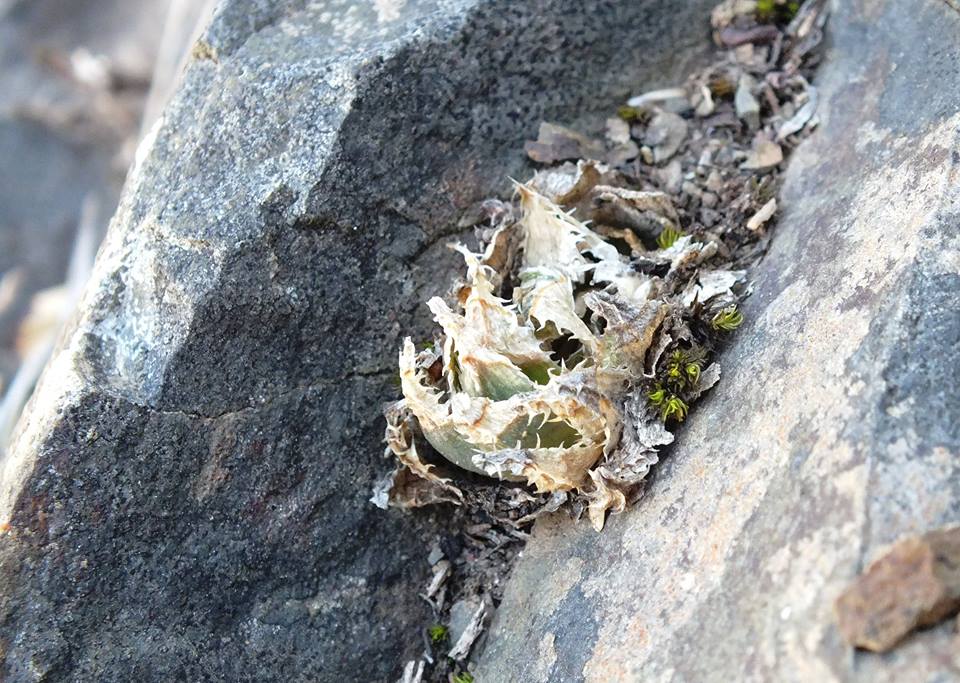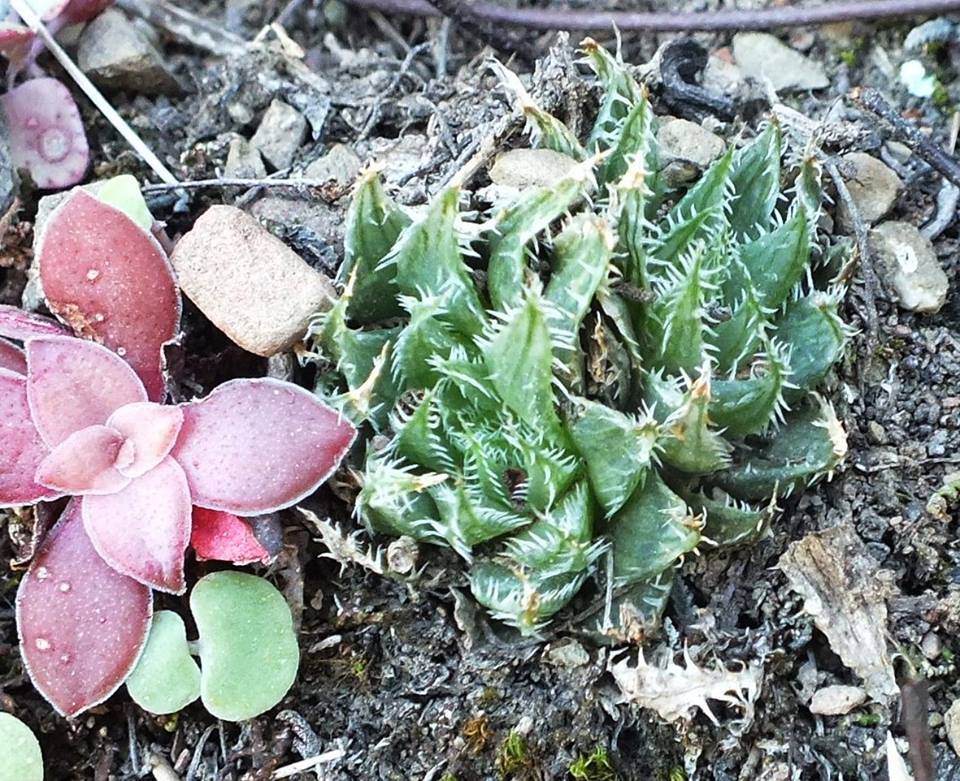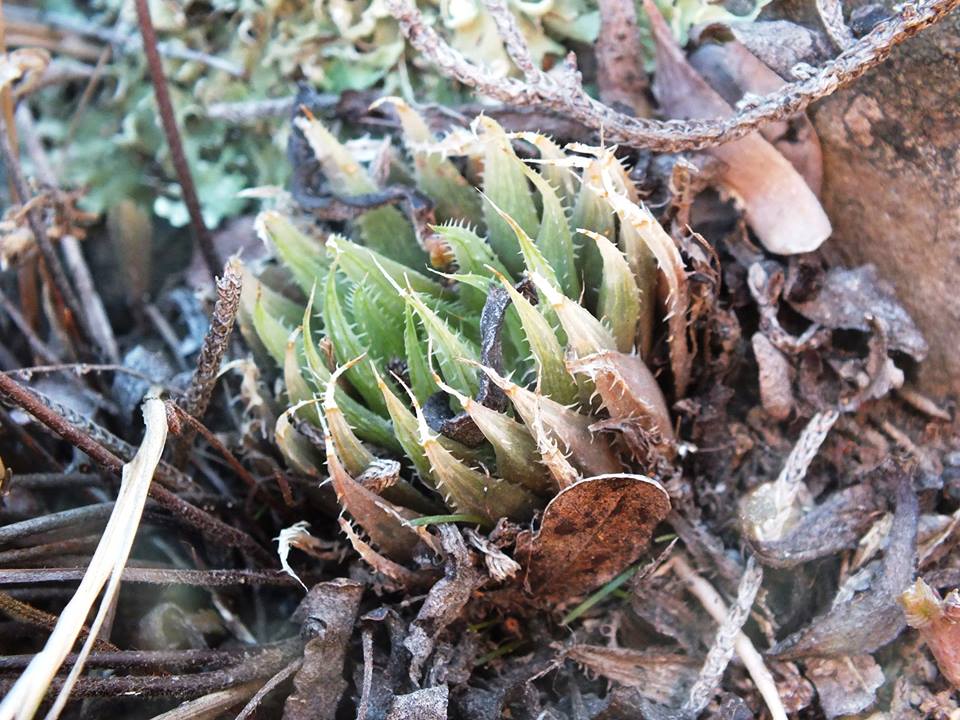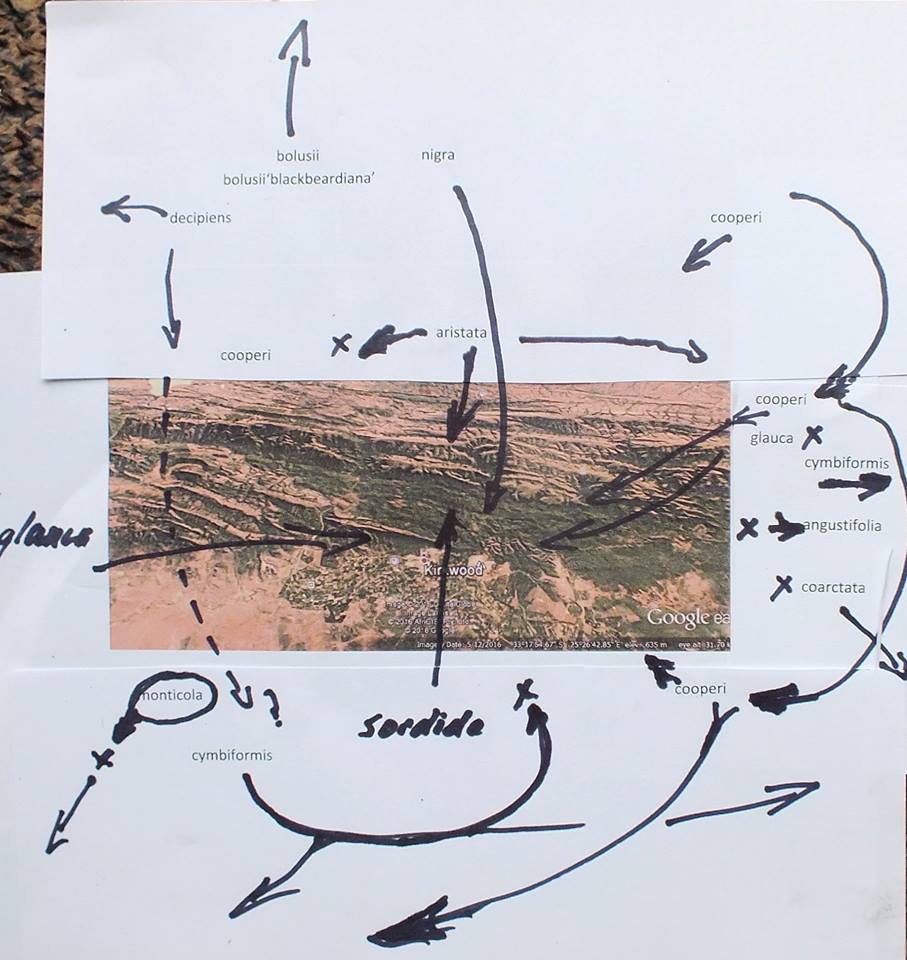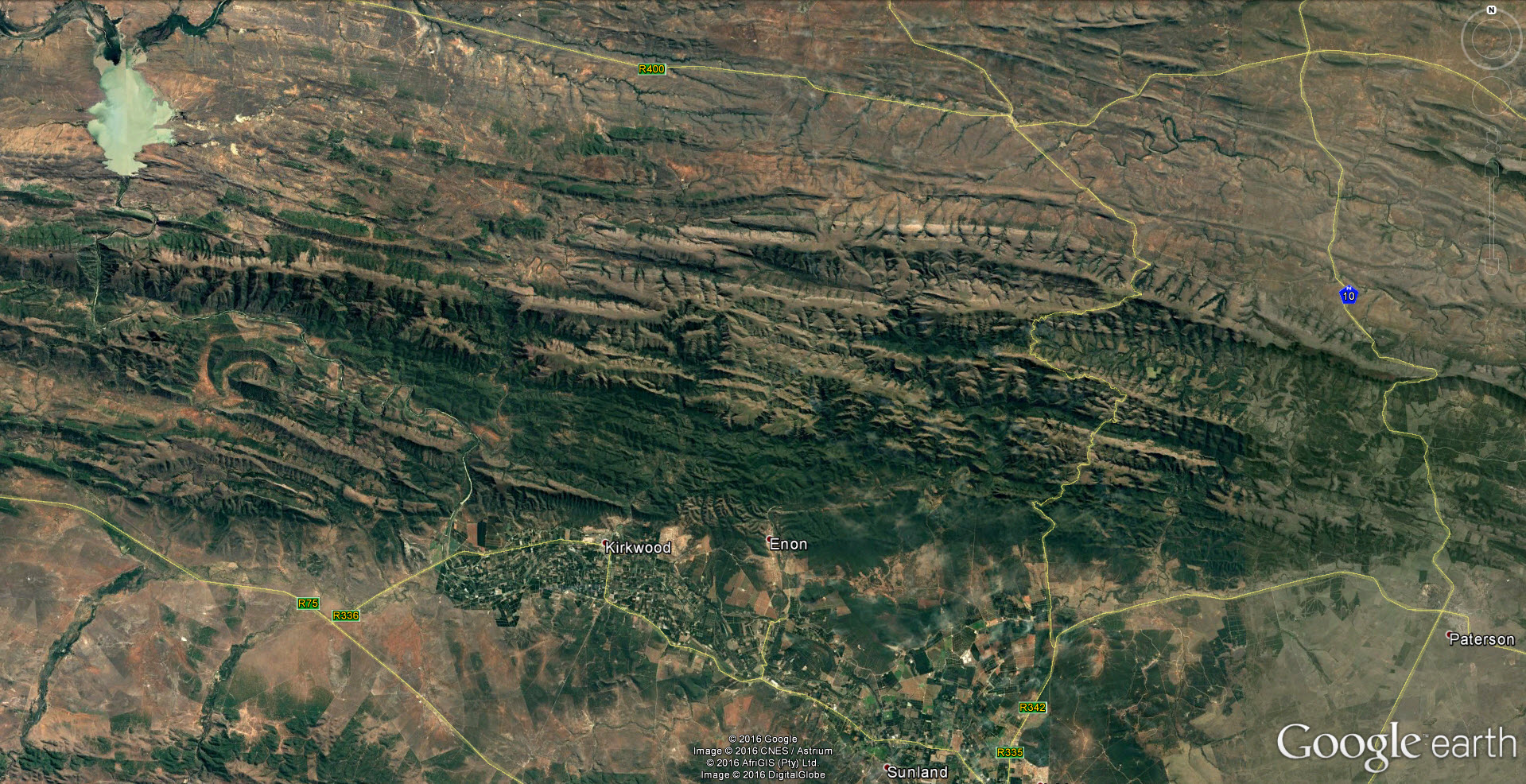3. Haworthia aristata Haw., Suppl.Pl.Succ. :51(1819), Rev.Pl.Succ. :58(1821). Non V.Poelln., Feddes Repert.Spec.Nov. 43:92(1938). Non Jacobsen 2:537(1954). Non Scott, Natn.Cact.Succ.J 35:12(1980). Non Scott :110(1985). Type: Cape, ex hort Kew. Not preserved. Lectotype (designated here): icon (K). Epitype (designated here): CAPE-3325(Port Elizabeth: Deadmans Gulch (Soutkloof) (-DA), Smith 3550 (NBG): H. denticulata Haw., Rev.Pl.Succ. :58(1821). Baker, JLinn.Soc. 18:213(1880). V.Poelln., Feddes Repert.Spec.Nov. 41:199(1937). non idem. 45:168(1938). Type: Cape, ex hort. Kew. Not preserved. Lectotype (designated here): icon, Kew library.
aristata: furnished with an awn.
Rosette stemless, proliferating slowly, to 6cm φ. Leaves slender, erect, incurved, dark-green, margins and keel entire or finely spined, with little translucence and faintly reticulated. Inflorescence simple, lax. Flowers 10-15, white.
In the first editions of the Handbook these two names were rejected as insufficiently known, and I did not agree with von Poellnitz’ use of aristata for his later H. unicolor. I mentioned too with regard to H. denticulata, that Von Poellnitz had consistently allied that name to the Hankey H. translucens (now gracilis) complex. However, von Poellnitz cites a number of improbable associates, further lists it as a variety of H. altilinea, and also describes it as having translucence. I do thus do also not agree with Scott’s 1985 interpretation where he overlooks the very translucent margins and keel of the species (see H. mucronata) to which he applies the name. It is only recently when I re-examined collections in the Compton herbarium, and a collection received from W.R. Branch from Addo, that it became apparent that Haworth’s two species can be allied to collections which have previously been hidden in H. gracilis. As applied here, it is indeed to a small dainty species which has very little translucence to the leaf. It is odd that the description as it appears translated in Scott (1980), reads ‘resembles a dark green cuspidata..’. Haworth’s description refers to Sempervivum cuspidatum and not to the big presumed hybrid Haworthia of that name. The late F.J. Stayner had in private communication commented on this odd species from Cougakop, east of Port Elizabeth. He collected specimens for the Karoo garden and these are still in cultivation. It was treated as a variant of H. xiphiophylla because it was not as translucent as most of the small elements in that area are, and because it was not substantial in terms of botanical record. Cougakop is now virtually quarried away. H. aristata is represented by about four collections from that area and also by three collections by P.V. Bruyns from further north and west. Here the plants do show some translucence and also tend to bluish-green, so it is possible that it may link up with small forms of H. decipiens. It should not be assumed that this element is really subtstantial enough as recent attempts to establish its validity have not been very successful. The collection from Mt Stewart cited below is probably H. decipiens var, minor.
Distribution:
3324 (Steytlerville): S. Mt. Stewart (-AB), Bruyns 1812 (NBG). 3325 (Port Elizabeth): Stonefountain (-BA), Bruyns 1654 (NBG); E. Verdun (-BB), Bruyns 1630 (NBG); Near Kommadagga (-BC), Smith 5890 (NBG); Soutkloof (-DA), Swart (NBG), Stayner in KG7/76 (NBG), Branch 459 (NBG); van Jaarsveld 6902 (NBG); Deadmans Gulch (Soutkloof) (-DA), Smith 3550 (NBG).
Inadequately located: Somerset East, Herre in STE6612 (BOL).


Haworthia aristata JDV87/53 Soutkloof. This is a photograph of a plant collected by W. R. Branch. Although there are several records of this element it has not been clearly shown to be a valid species. 
Haworthia aristata JDV96/90 Soutkloof. This collection seems to more closely resemble an intermediate between H. gracilis and H. cooperi.

